Etosha – Namibia’s Wonderful Wildlife Water Holes
This the seventh post on a recent trip to the fabulous country of Namibia with Canadian travel experts Adventures Abroad. In the course of just over a week our small group has discovered that Namibia is a huge country with a great variety of landscapes. We have baked in the 40° C (104°F) temperatures of the Namib Desert while climbing some of the highest sand dunes in the world. We have been chilled by the ice cold waters of the Benguela current along the Skeleton Coast while exploring what could be a German doppelgänger city, Swakopmund. We have viewed ancient rock carvings at the UNESCO World Heritage Site of Twyfelfontein. And only yesterday we sought and found desert elephants in the dry river beds of Damaraland. For the next three days we will visit Namibia’s version of the Serengeti, Etosha National Park where natural and man made waterholes in the midst of one of the world’s largest salt pans draw a huge number and variety of wildlife. This might be the highlight of the entire tour on which there have already been many.
The drive from Doro Nawas in Damaraland to the Anderson gate on the south side of Etosha takes the better part of the morning and we arrive after a relatively uneventful drive on mostly paved roads. That’s the last thing that will be uneventful for the next few days.
This is the entrance to Etosha where, unlike previous national parks we have visited, security is pretty intense. Their are rhinos and plenty of elephants in Etosha and the Namibian authorities want to make sure they know who is in the park at any given time, I presume to control poachers as much as possible. Given the size of the park at over 8,600 square miles that’s a big task.
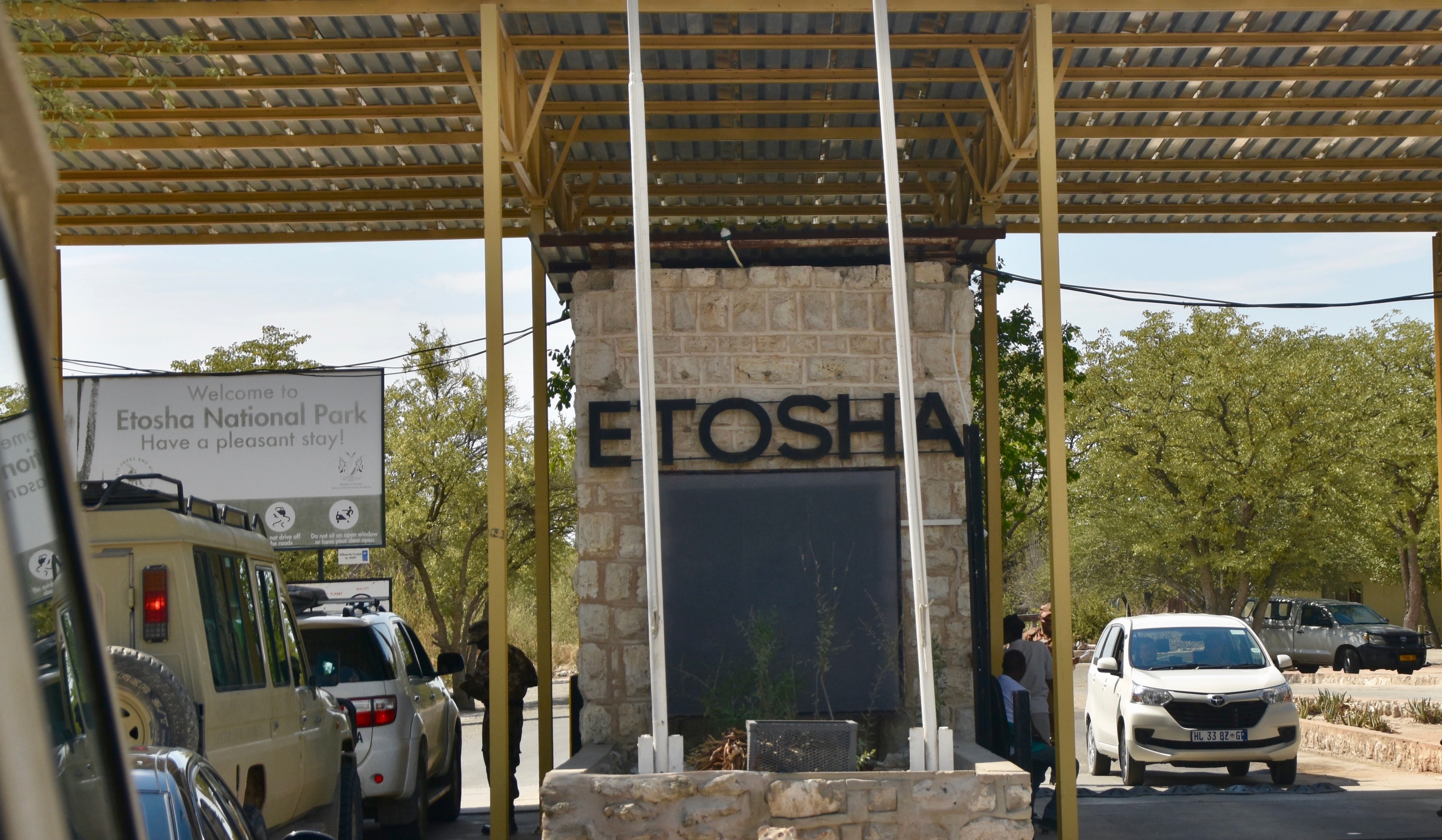
Just outside the entrance there are bare-breasted Himba women selling trinkets, but we don’t stop to look or pay the fee to get a photograph of them. I’ve seen enough in National Geographic as a youth to satisfy any prurient interest I might still retain.
Etosha has been a game preserve for over 110 years. First established by the Germans and later made into a national park by the South Africans, it now belongs to the people who actually live in Namibia and is one of the greatest tourist draws in the country. It is the only place in the country that I could recommend visiting on your own if you were so inclined. There is a paved road all the way from Windhoek and the roads in the park, while not paved, are pretty good. I saw couples driving Honda Fits through the park. The other thing that makes it doable on your own is that most of the wildlife comes to you. By that I mean that the primary wildlife viewing spots are at the many waterholes throughout the park. You just drive up, park and see what’s there. That being said, I still would much rather prefer to travel with experienced guides like Perez and Gerhardus who know the best spots to go and can tell you what you are seeing in the way of new birds, mammals and reptiles. Everyone knows what a lion or giraffe looks like, but what about a dik dik or a lilac-breasted roller?
This is a map of the eastern portion of Etosha where we will be doing four game drives over the next few days starting this afternoon. The waterholes are marked by blue dots. The area in white is the vast Etosha salt pan which is 1,840 square miles in area. Compare that to the 40 square miles of the famous Bonneville salt flats of Utah.
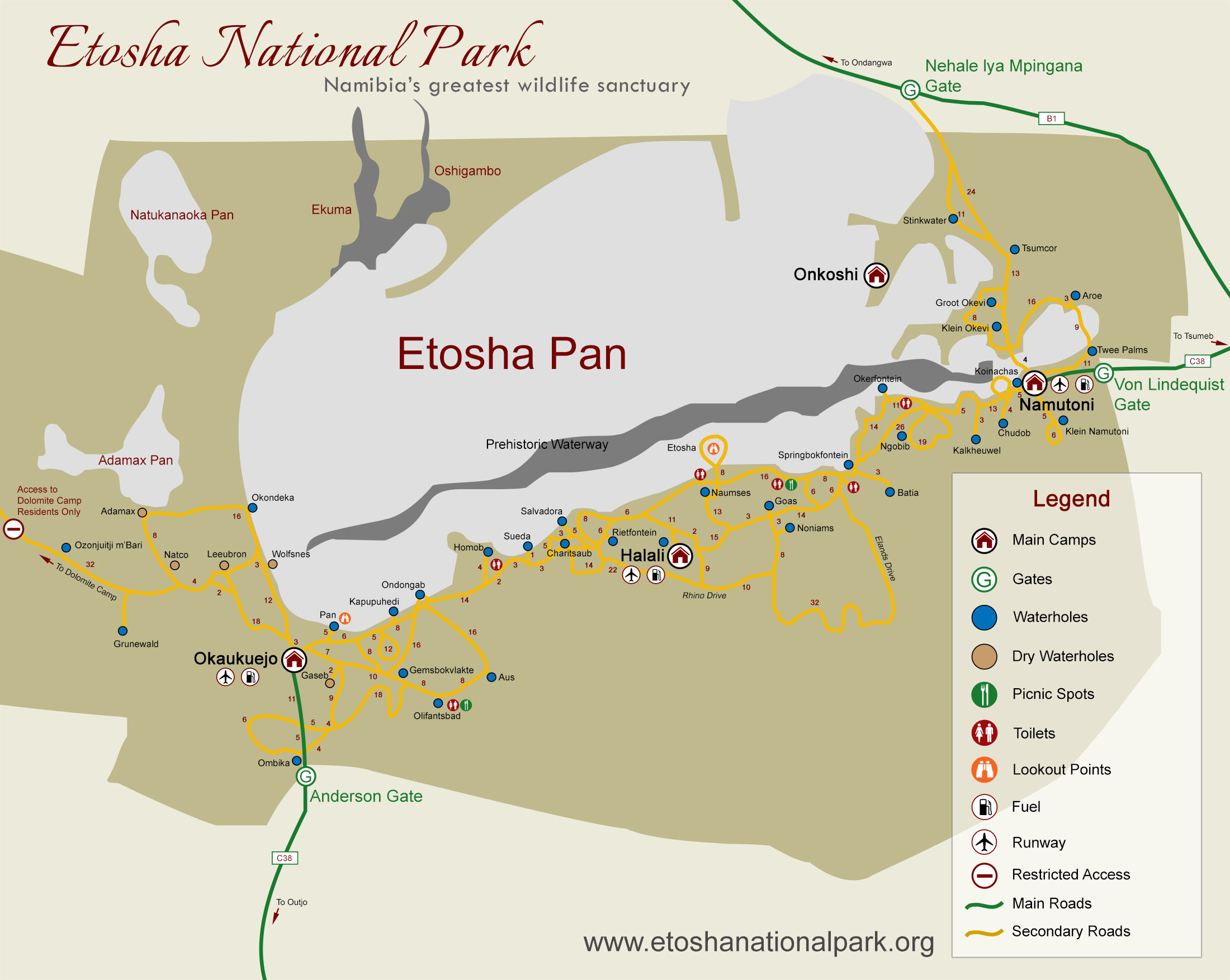
So let’s get going and see some amazing wildlife.
Etosha Game Drive One
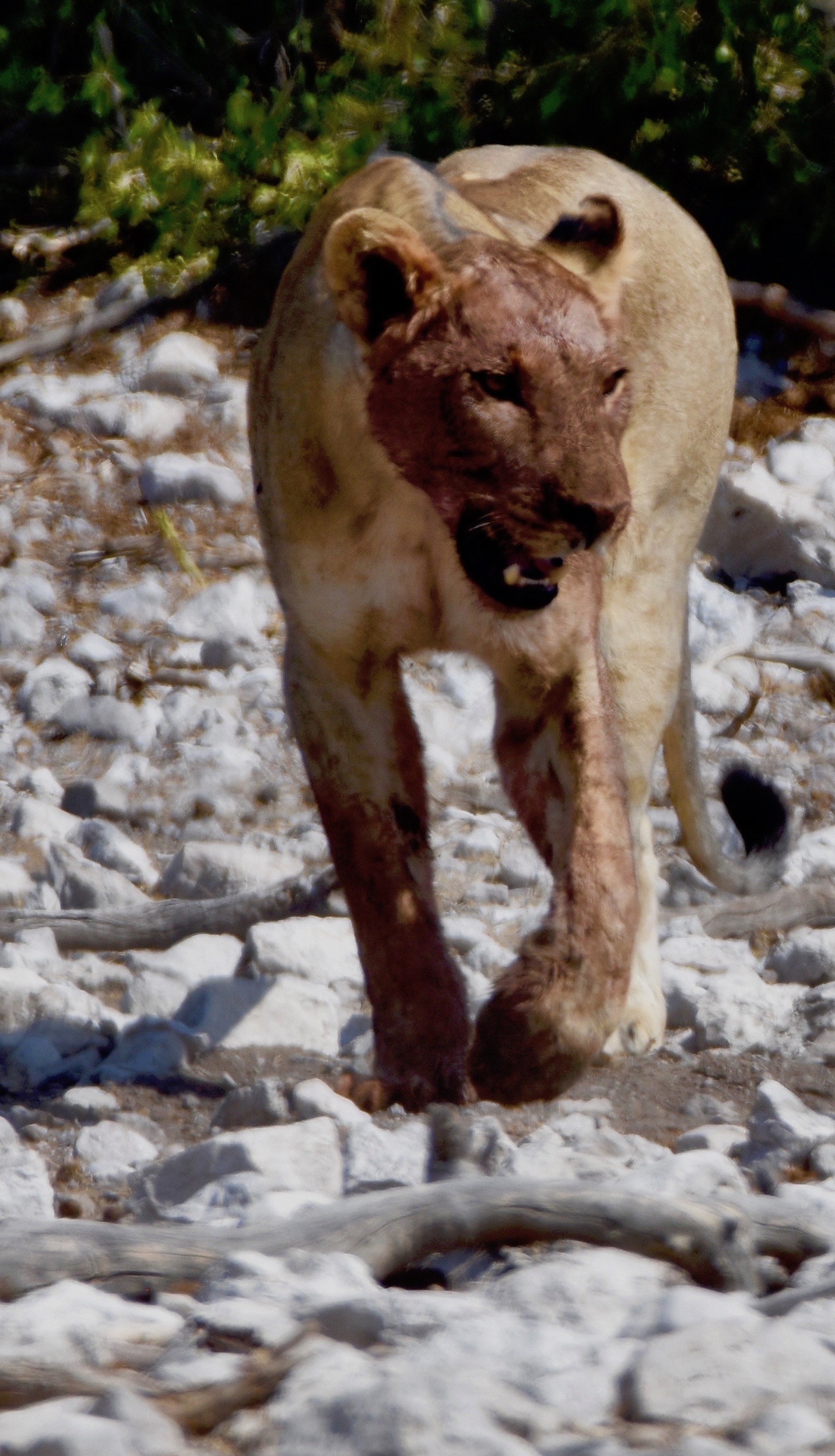
After stopping at Okaukuejo to get our permit and stock up on supplies, we headed for our first waterhole to the west. Literally right off the bat we came to this scene where a pride of lionesses was gorging and fighting over the carcass of a freshly killed springbok.
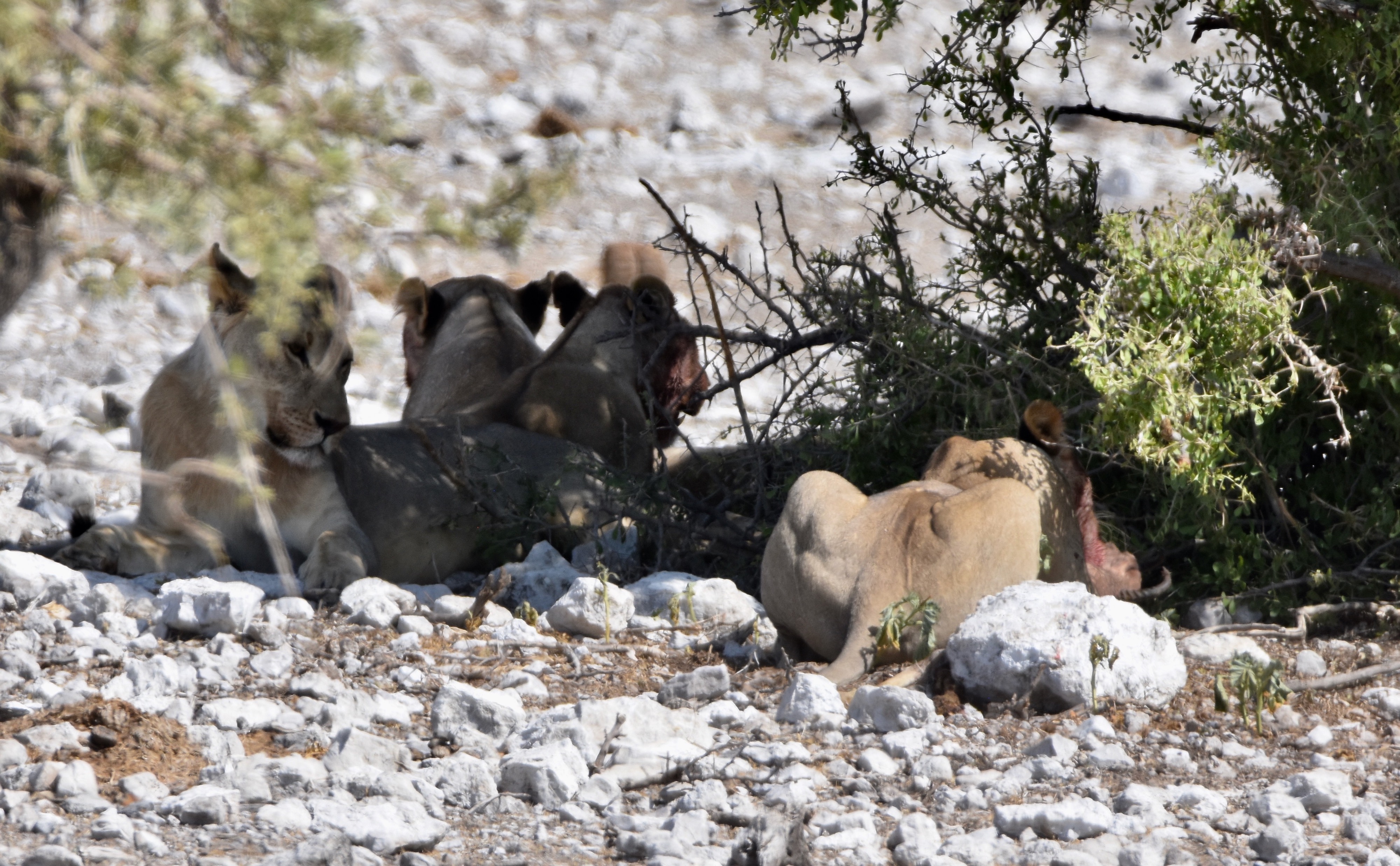
I never noticed it until I blew up this photo of a young lion dashing away from the kill site, that he was carrying the head of the deceased springbok in his jaws. Talk about nature at its rawest.
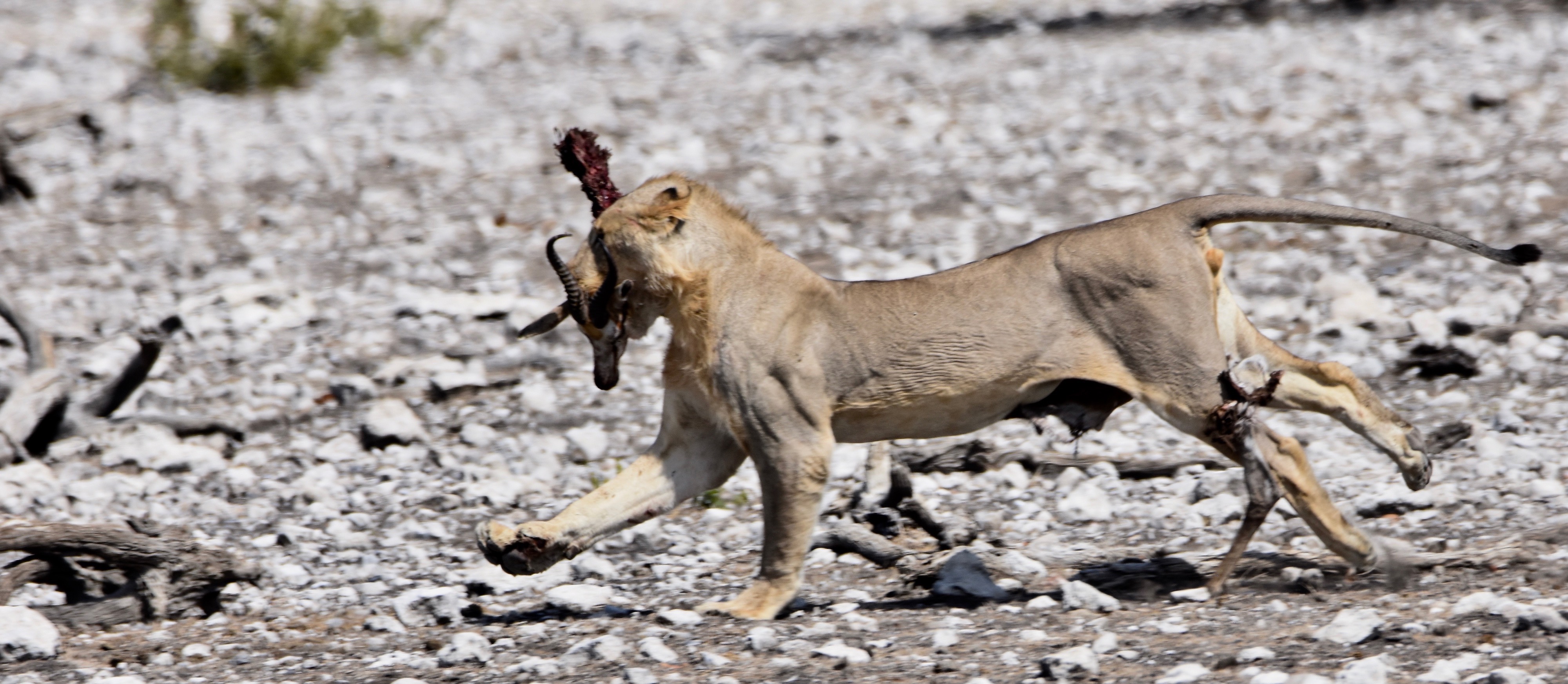
Next up was our first giraffe of the tour who didn’t seem fazed by the nearby lions, presumably because they were already at a kill.
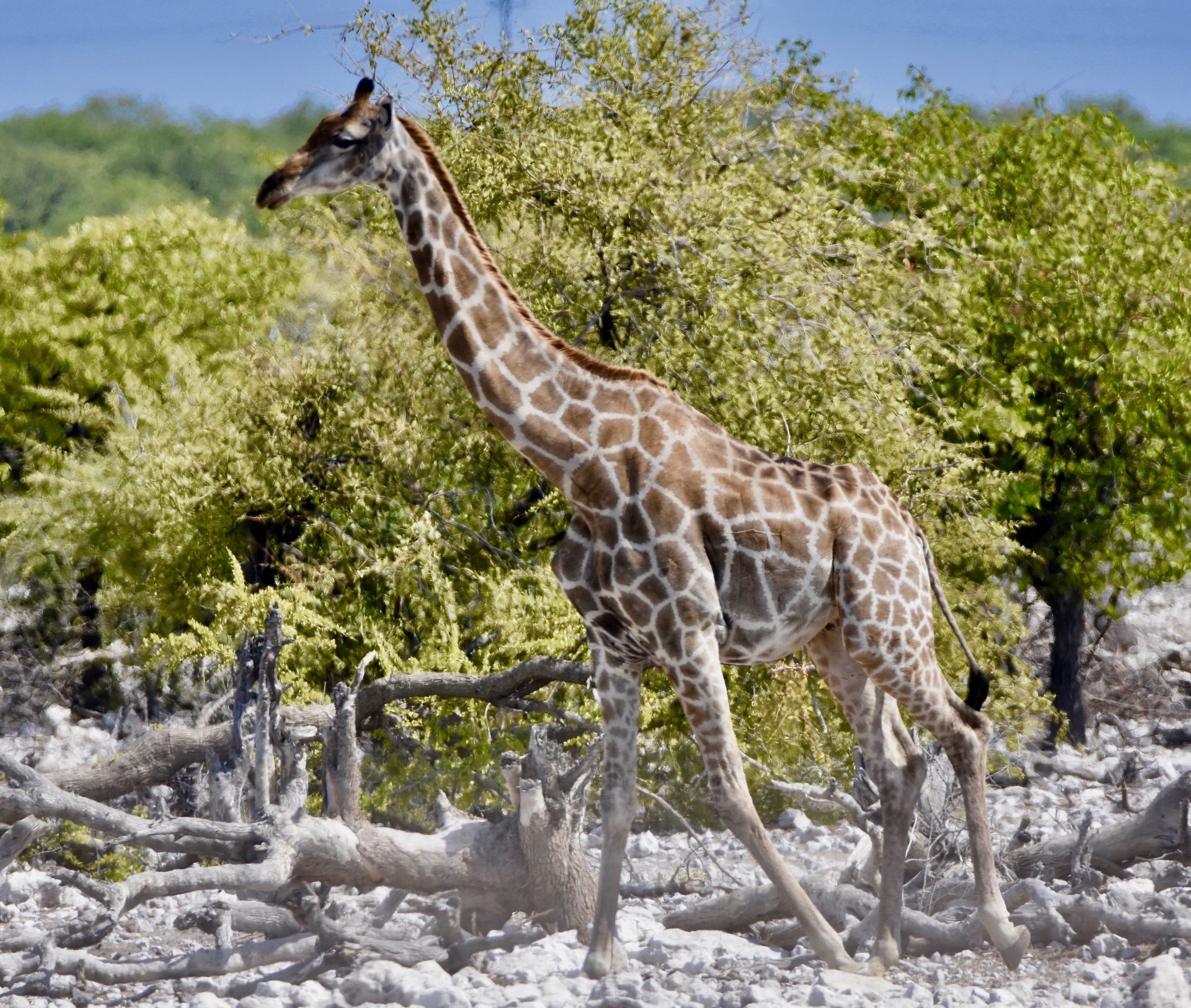
Despite the fact that they had just gorged on the springbok this lioness still had time to torment these wary zebras.
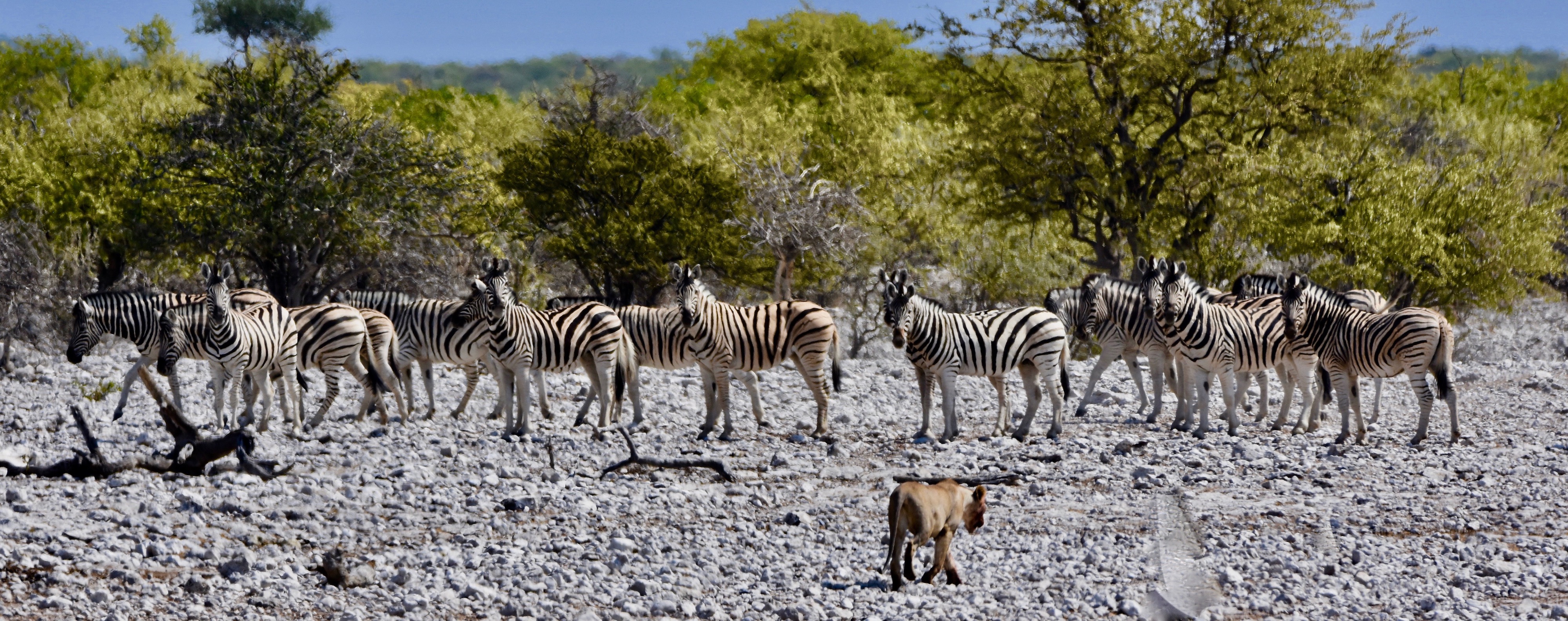
And the wildlife just kept coming, with this very self-satisfied ostrich leading the way..
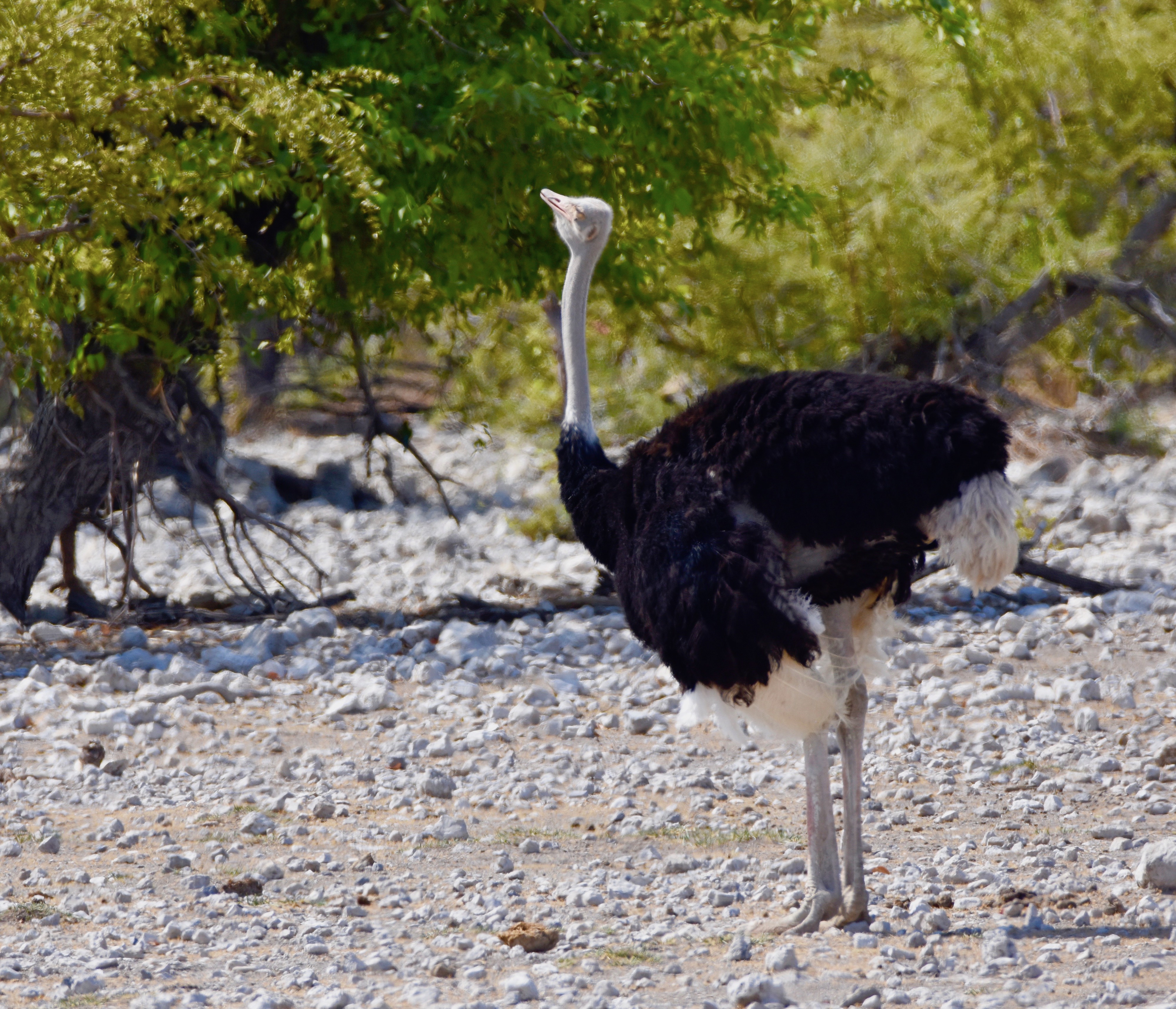
This is a kori bustard, the heaviest bird in the world that can actually fly, although you’ll rarely see them off the ground.
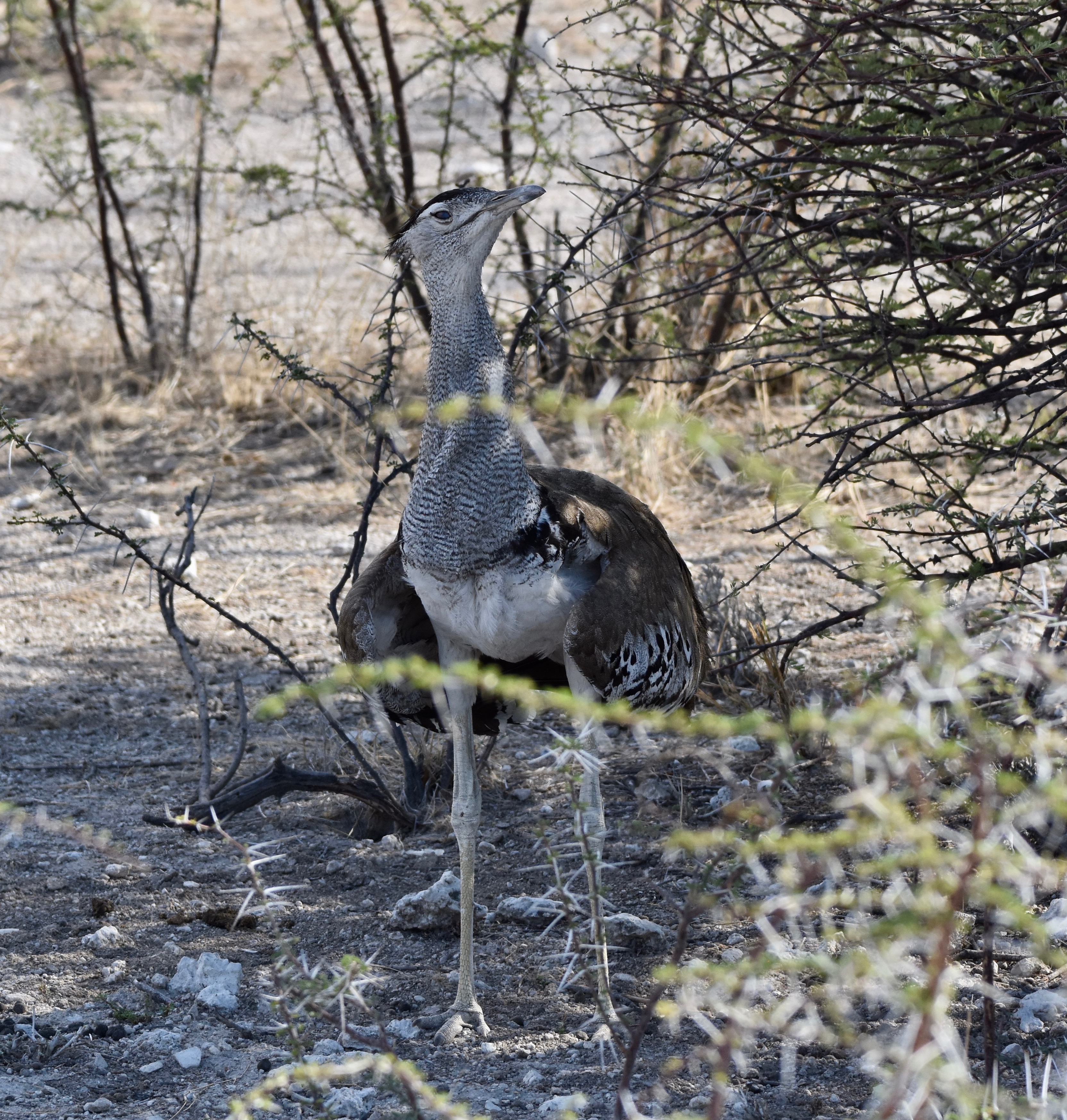
Another large bird that also sticks close to the ground is the Northern Black Korhan.
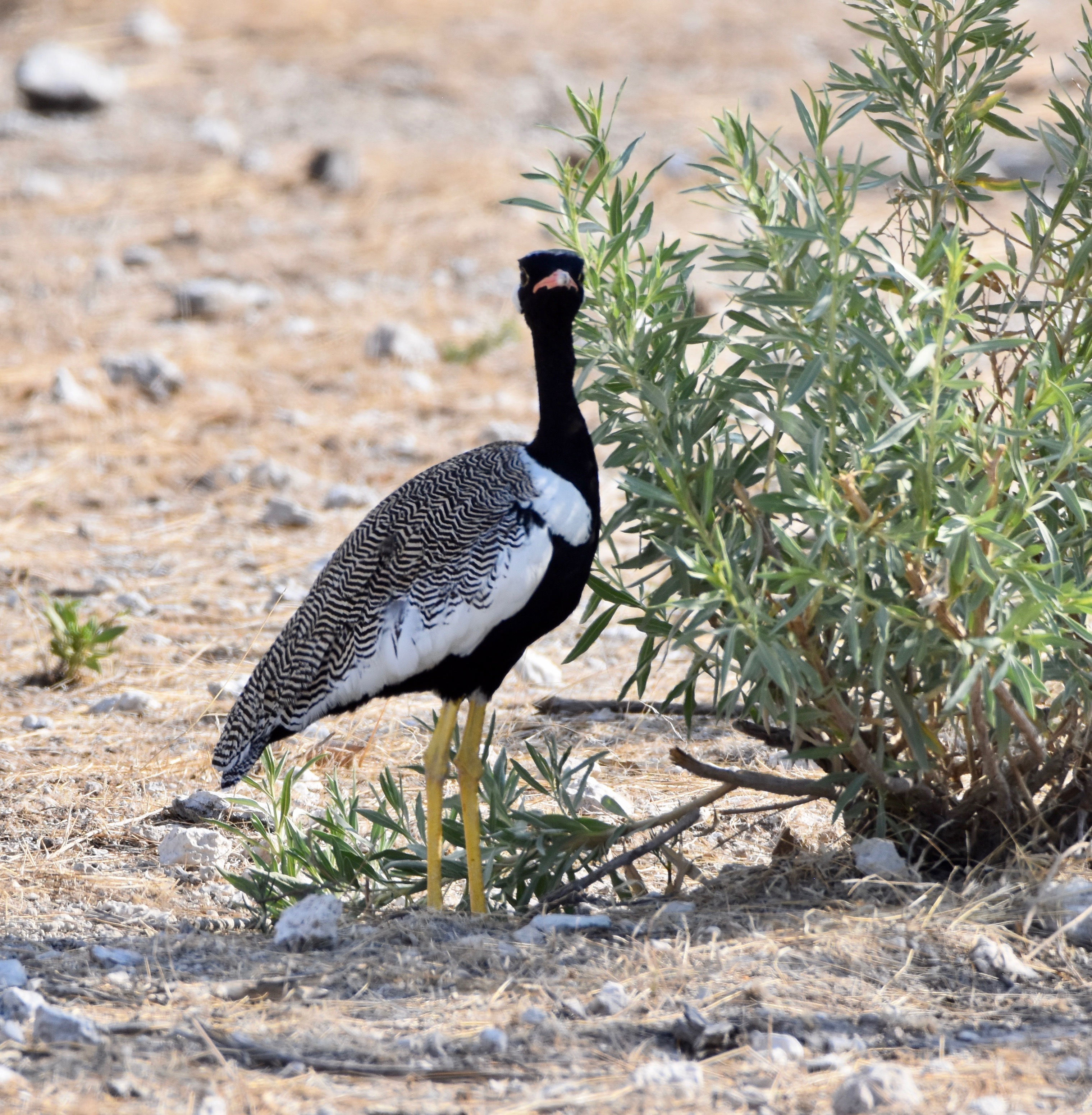
Going up in size we came across this solitary and very old bull elephant.
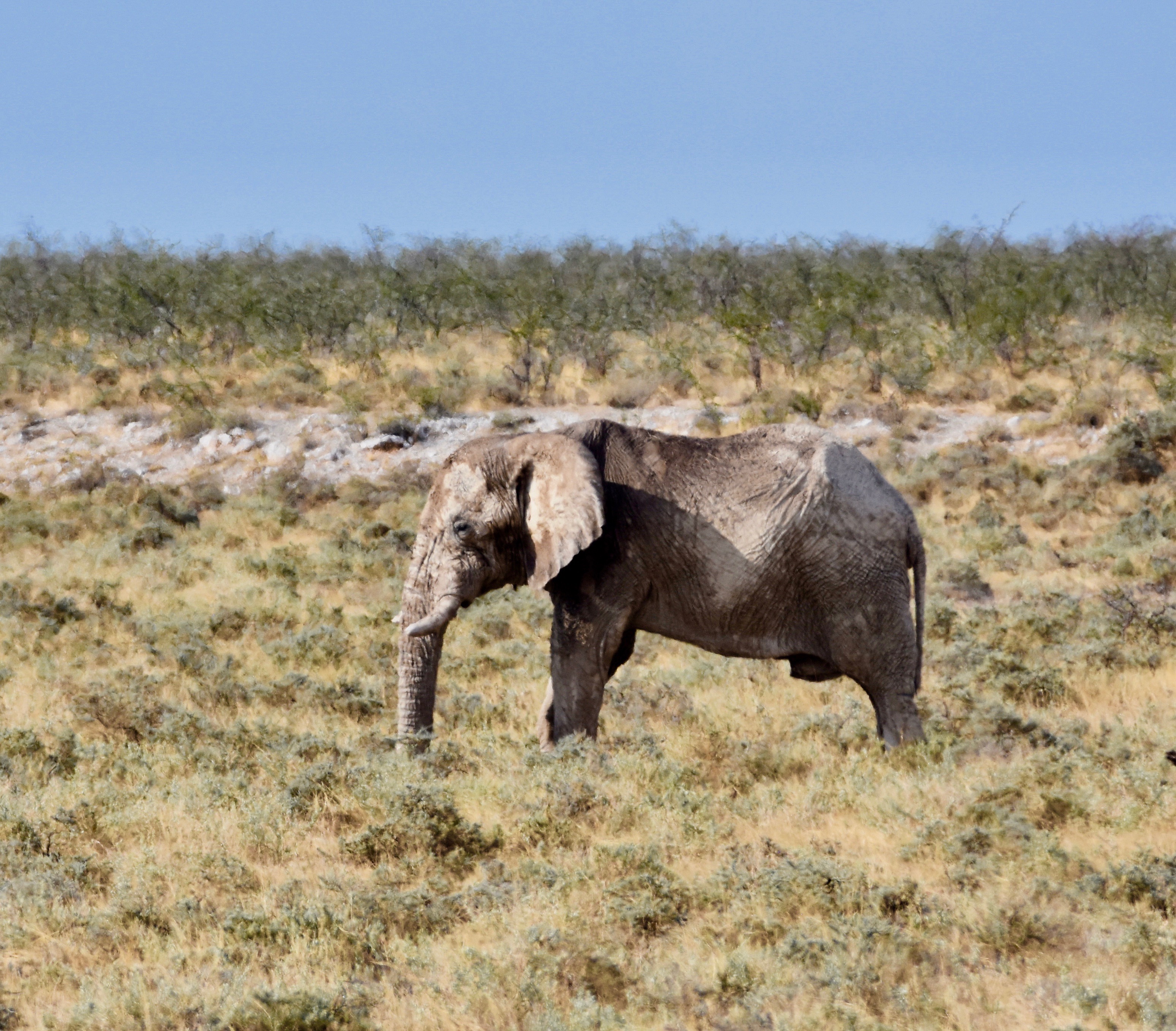
Springboks are probably the most common antelopes of southern Africa and you see them everywhere in Etosha.
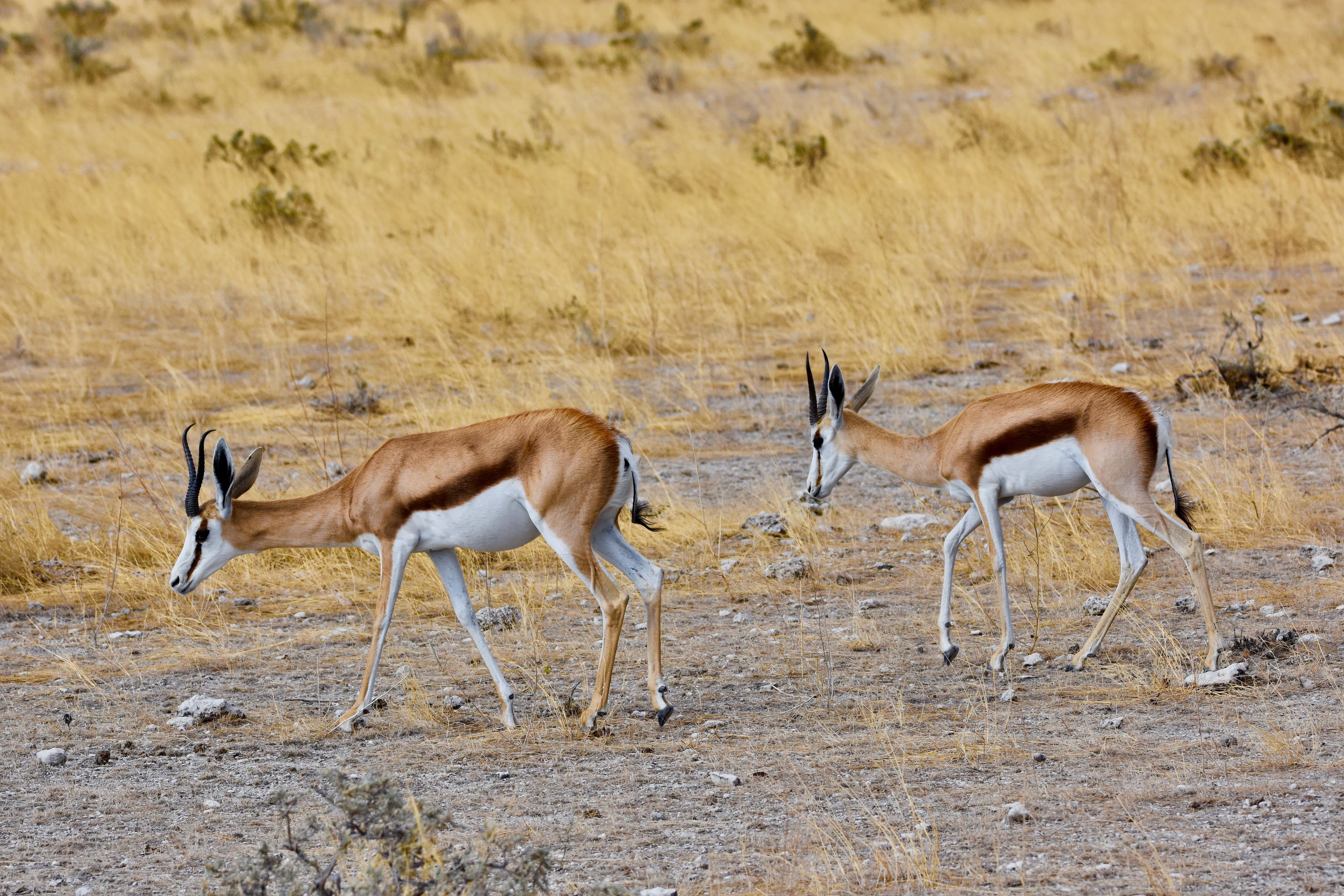
Slightly less common, but still abundant are black-faced impalas. It’s hard to judge between them and the springboks as to which are the prettier because both are so fetching (and according to the lions, equally delicious).
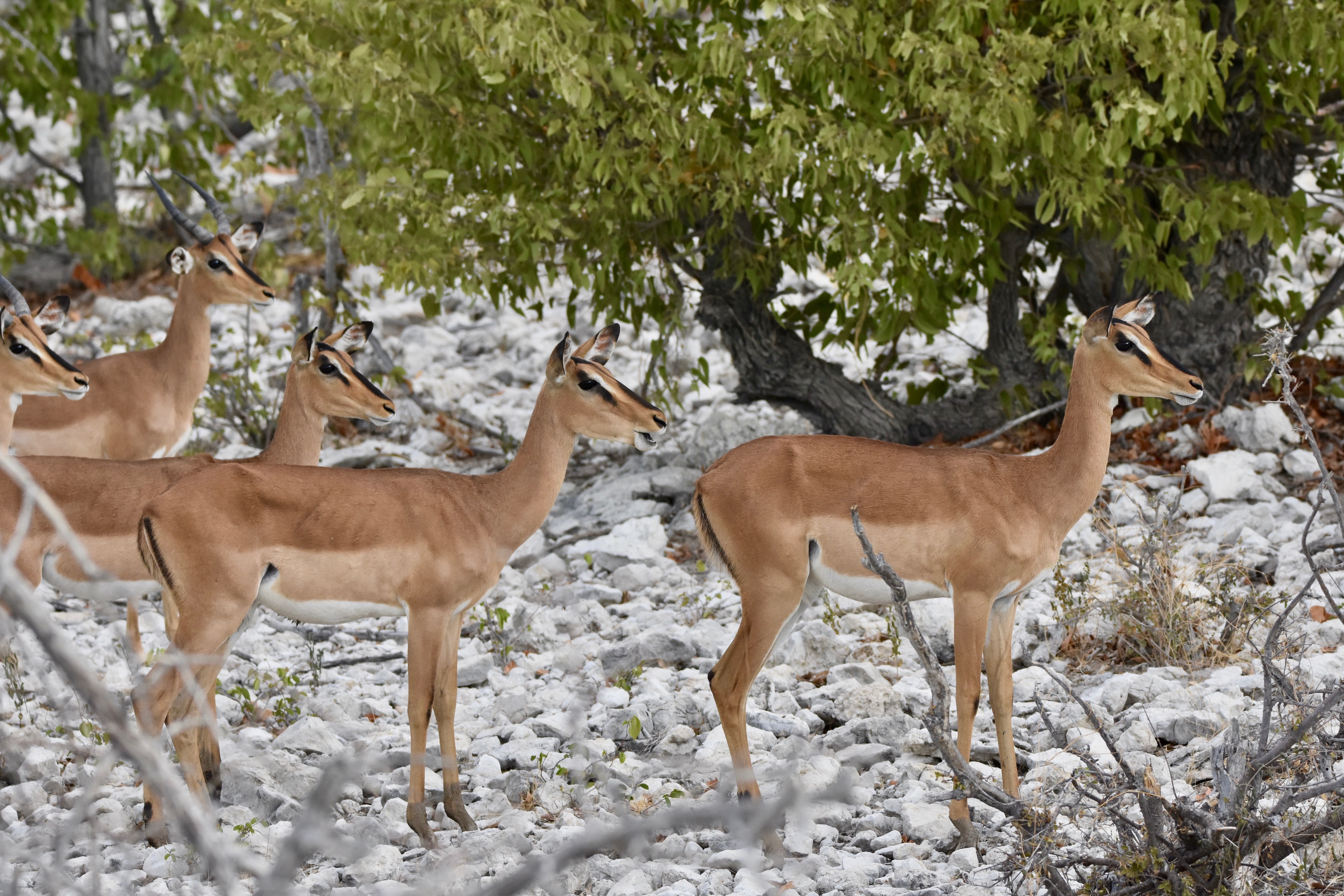
Male impalas amass herds of females that would make a Saudi prince jealous. This is the guy in charge of about forty females.
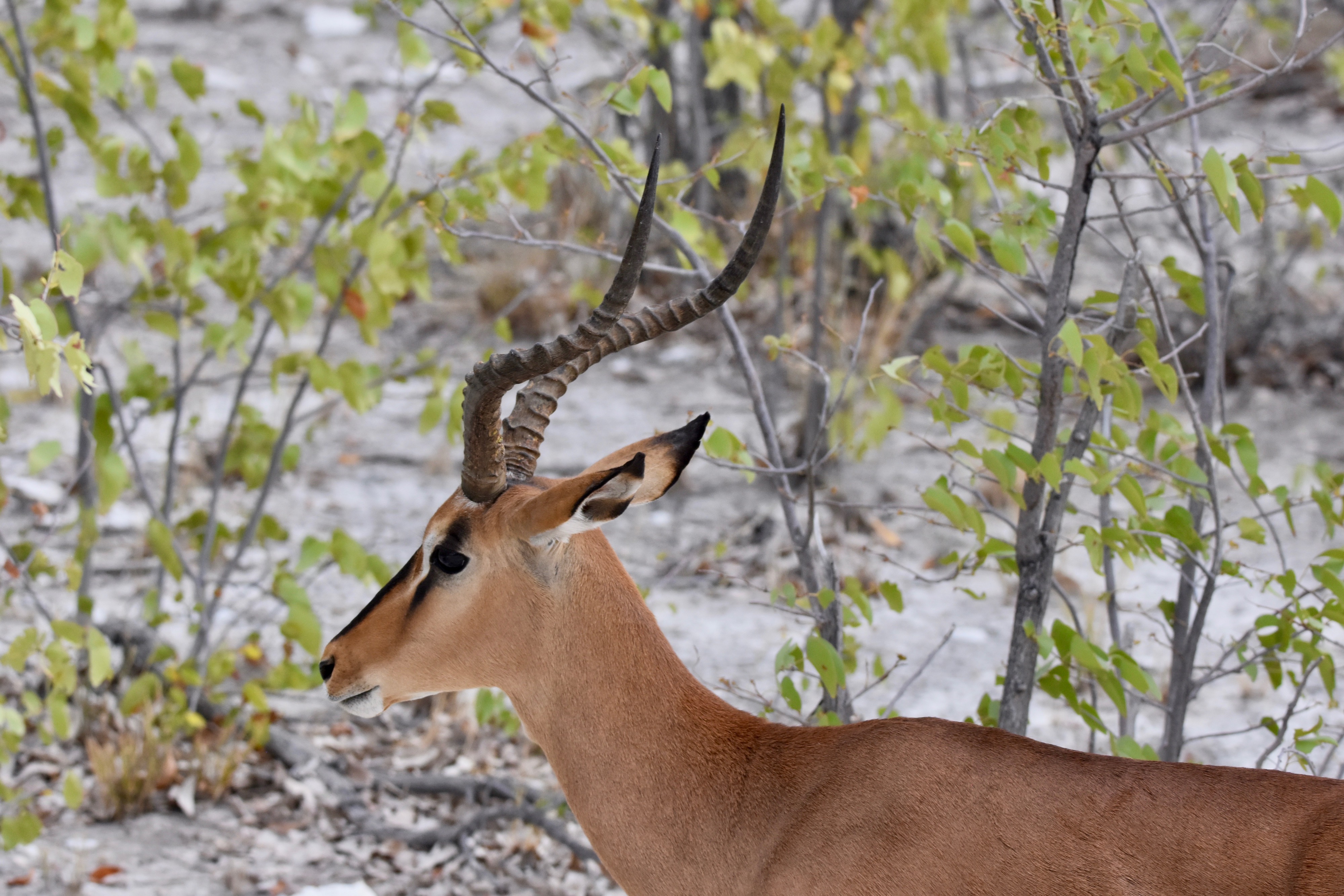
We finished off our first Etosha game drive with another pride of lions including this snarling lioness.
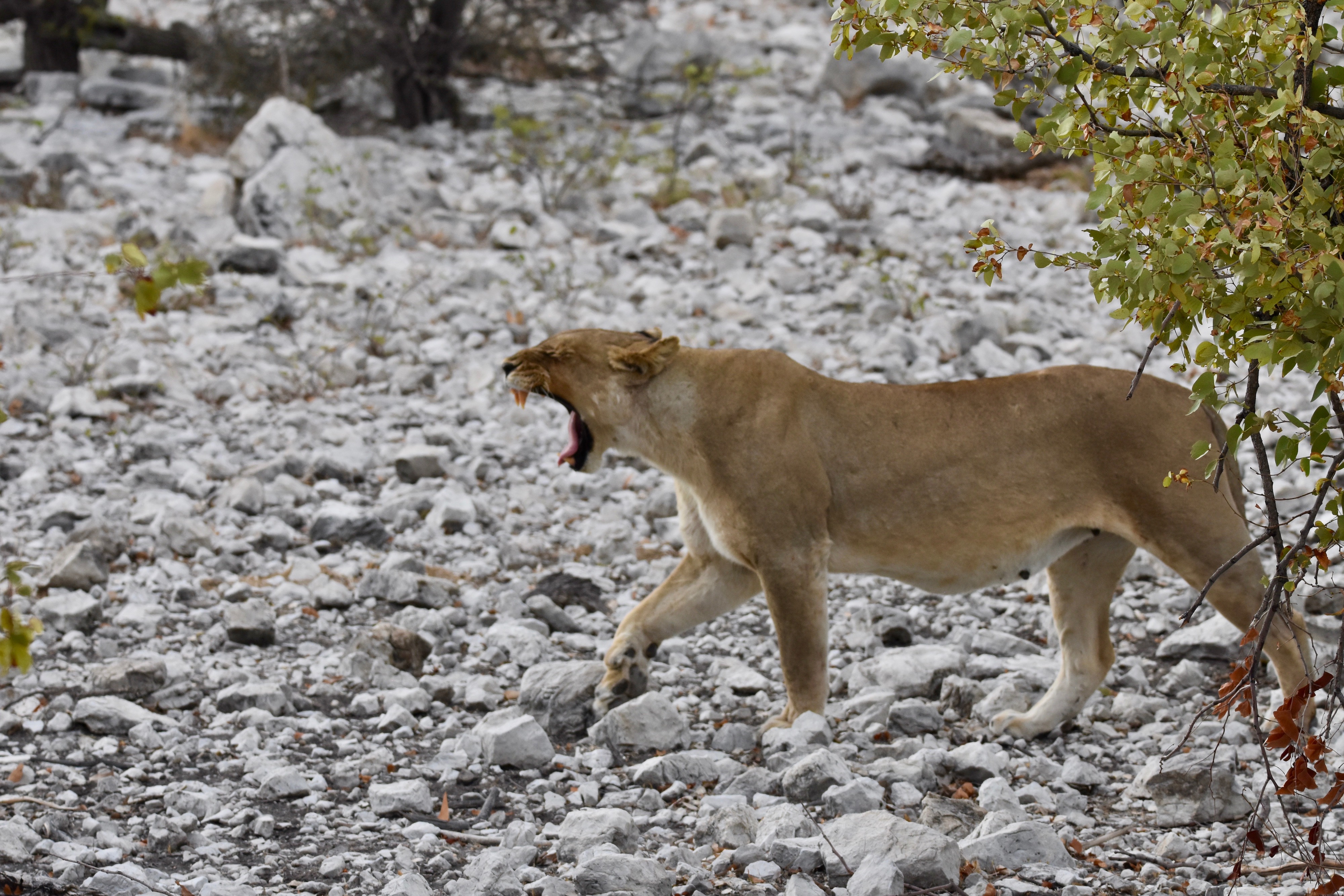
She then turned and took a good long look at our Land Cruiser before deciding it was too big to tackle. Facing down a lion from twenty feet away may not be everyone’s cup of tea, but it sure as hell gives you an adrenalin rush if you think for one second it might actually attack, even though you know in the back of your mind it won’t.
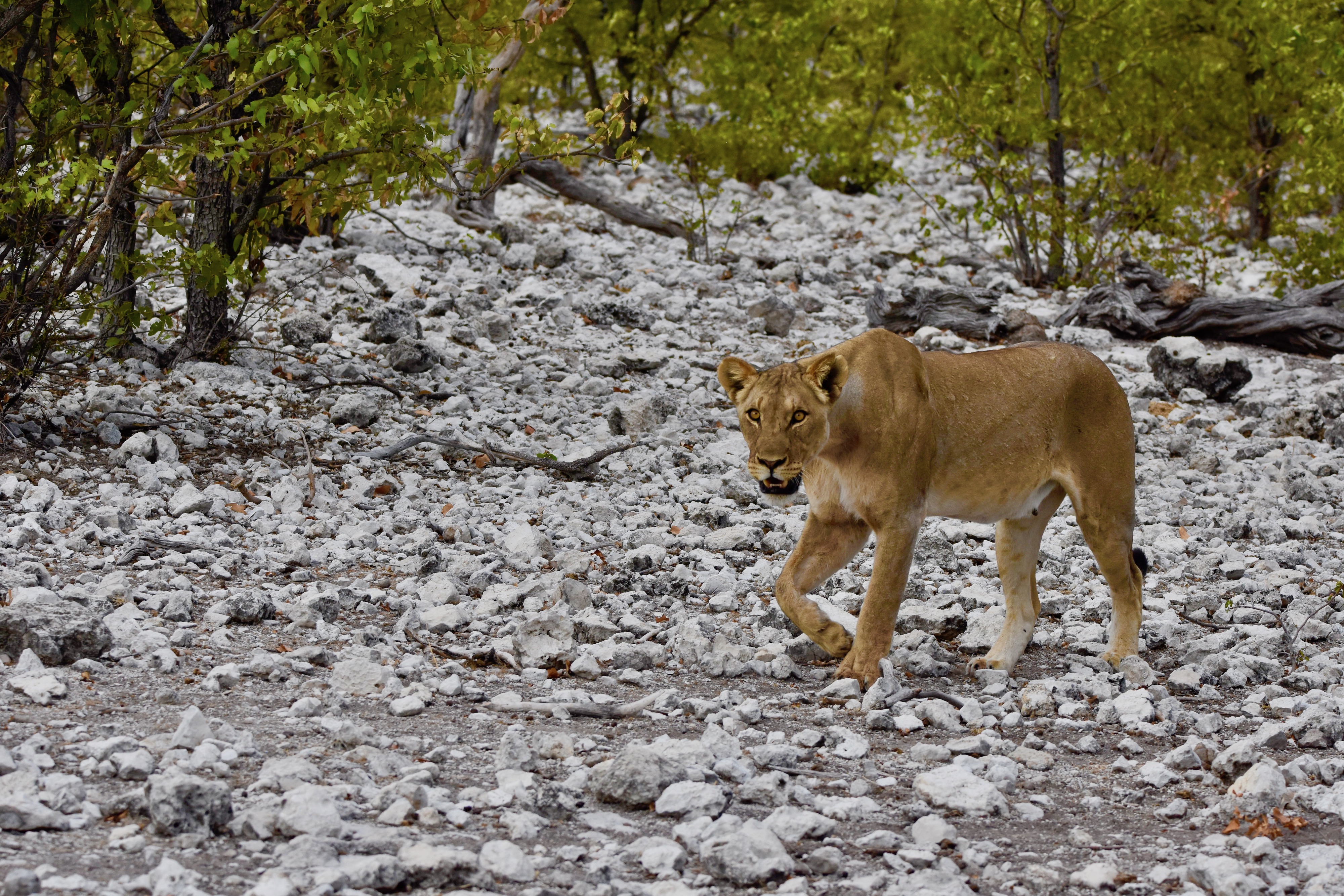
Our first night in Etosha was spent at Etosha Safari Lodge just outside the south side of the park. By comparison to our other lodges in Namibia it was huge with 65 separate cabins and a central lodge to match. It was quite a hike up to the lodge from our cabin which was a good 200 yards away. While nowhere near as intimate as the other lodges, it did have a great viewing platform off the back of the lodge and a good dinner and breakfast buffet.
Game Drive Two
After getting up before dawn we had breakfast, checked out and were at the Etosha Park gates by sunrise. Today we will spend the entire time looking for wildlife at various waterholes in the park. If yesterday was any indication of what is to come, it should be a day to remember.
Before reaching the first waterhole we came across this confrontation between a jackal and a mongoose. The jackal might have been a lot bigger, but after a couple of half-hearted attempts he knew he wasn’t having mongoose for breakfast. Those guys are famous for killing cobras so a black-backed jackal was not about to upset his day.
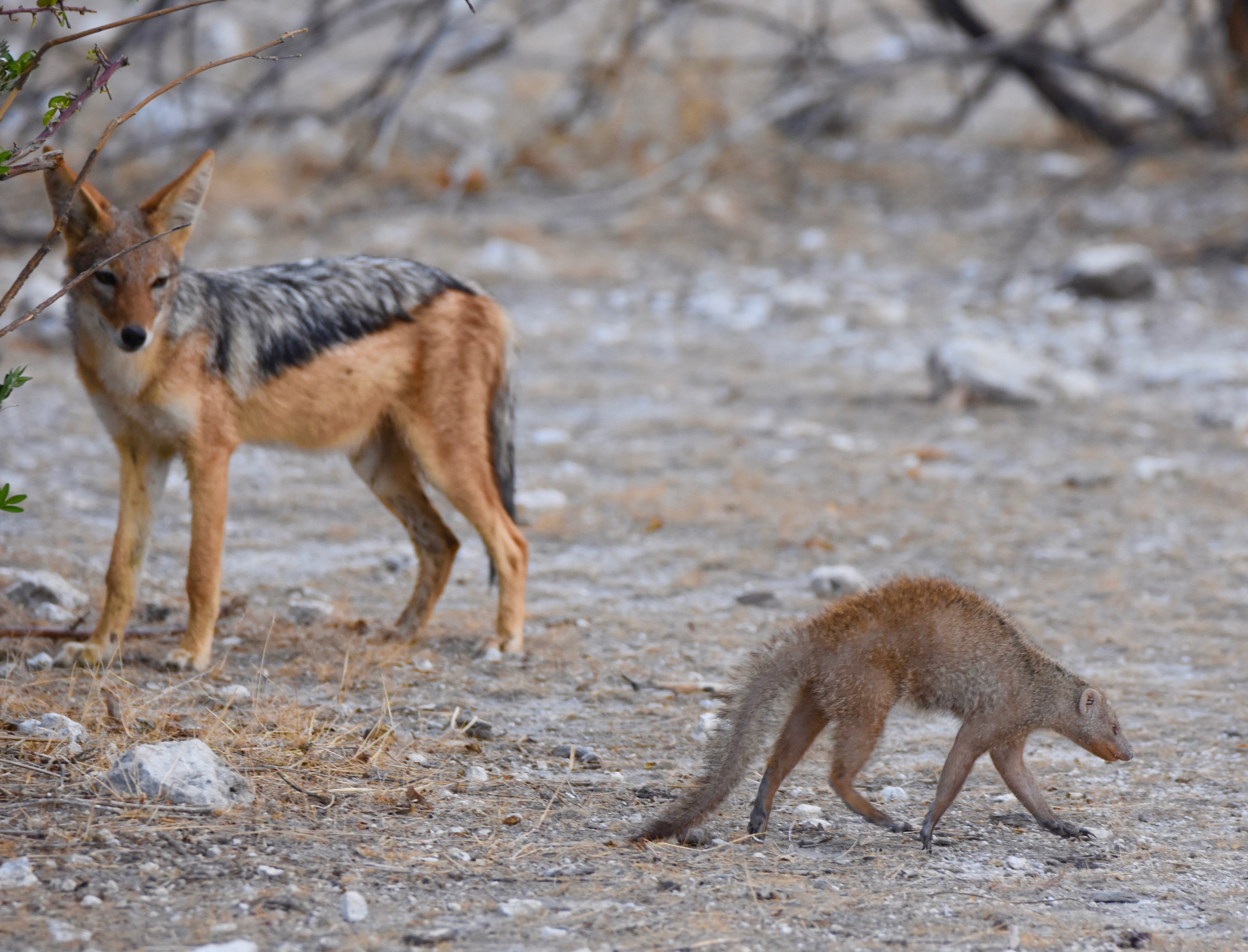
This is a lilac-breasted roller, considered by many to be the prettiest bird in Africa. They are extremely common in Etosha and we passed one about every kilometre.
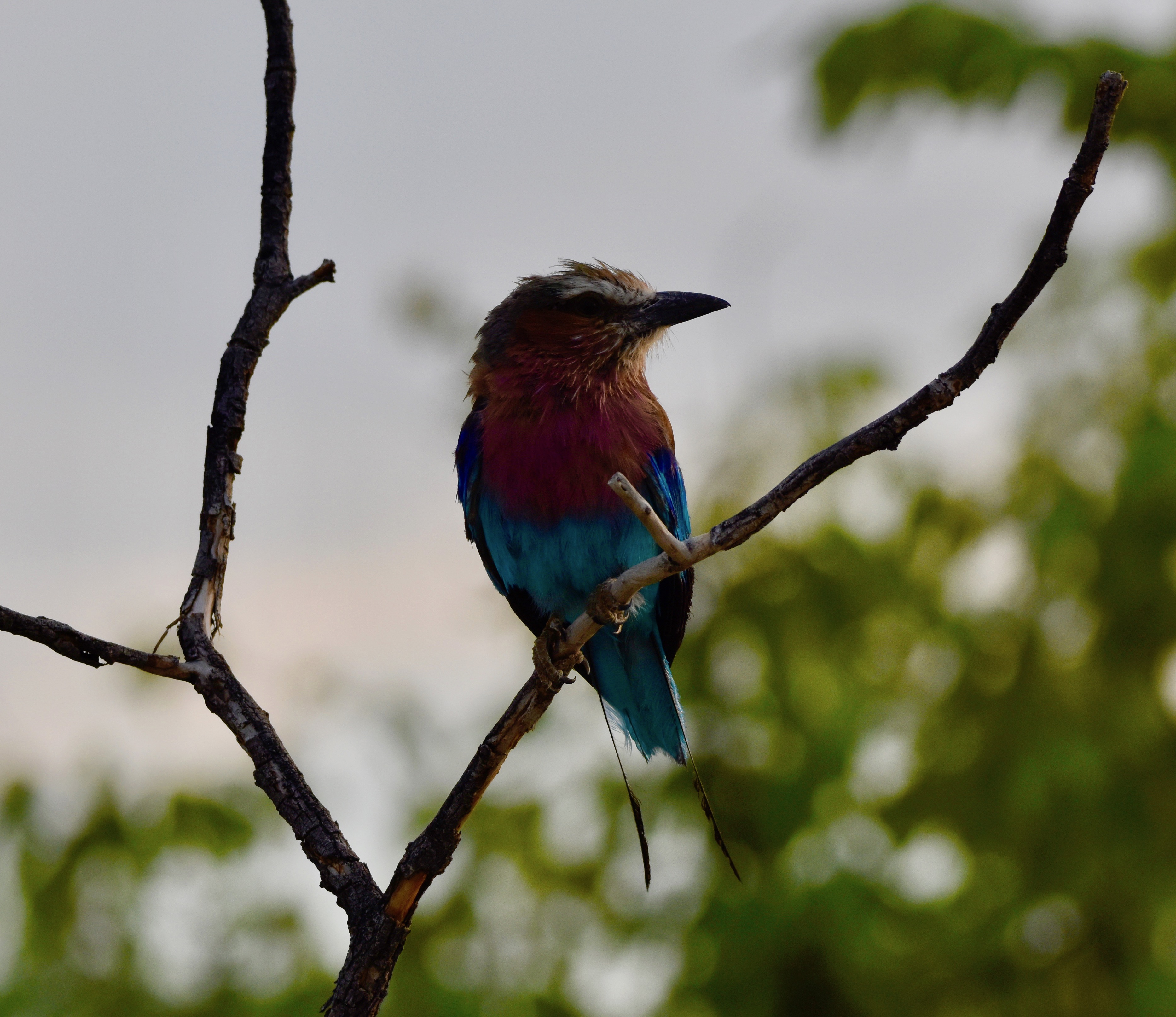
Anyone who has been to East Africa will be familiar with the huge herds of wildebeests that migrate across the open savannah. However, the vegetation in Etosha is not as lush as the grasslands of Kenya and Tanzania with the result that the numbers of animals in any one herd are not as great. This is a blue wildebeest which is the same species that inhabits East Africa, but it looks quite different from their more northern cousins and is in fact a subspecies taurinus that is found only in southern Africa. We saw surprisingly few wildebeests in Namibia. Apparently they were hunted to near extinction in the 19th century by Boer farmers who found them a nuisance by having the nerve to eat the crops they were growing. They and the other species of wildebeest, the black are both making a comeback in southern Africa.
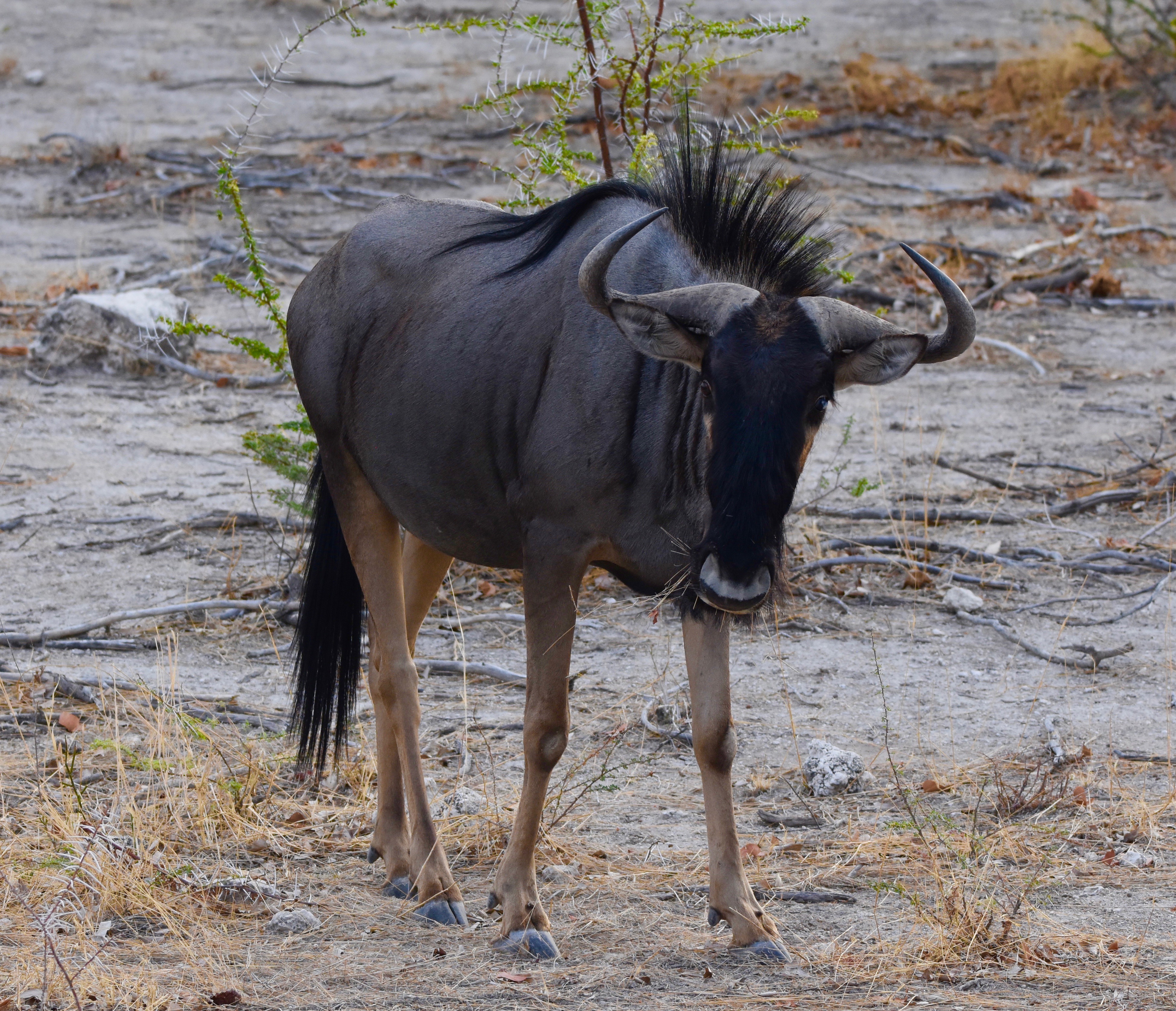
Not far from the wildebeest we came upon a small group of spotted hyenas with this one completely unafraid and walking right up to the Land Cruiser. Of all the animals I’ve seen in the wild, hyenas are the only ones that really creep me out. They just look like walking death. In Etosha they prey on springboks and animals as large as kudus, which are pretty big. That wildebeest better get a move on.
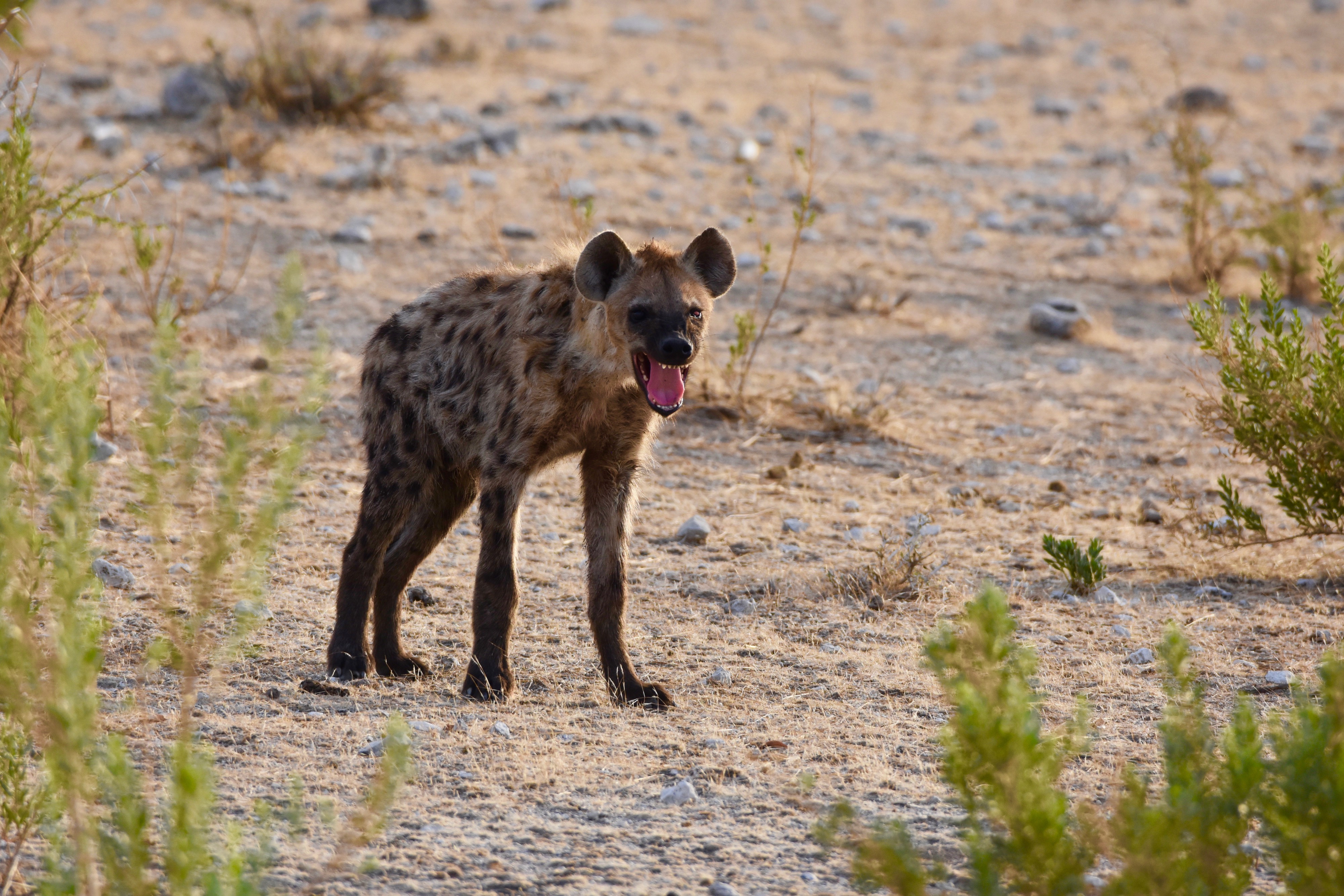
You might think that an animal as large as a giraffe would have a hard time finding enough to eat in a dry place like Etosha, but in fact they are quite common. Their long necks let them get to the tops of acacia trees that even elephants can’t reach. This is a Namibian giraffe which is a subspecies of the South African giraffe and almost unique to Etosha. It differs from the other species by having ragged edges to its spots and whiter ears.
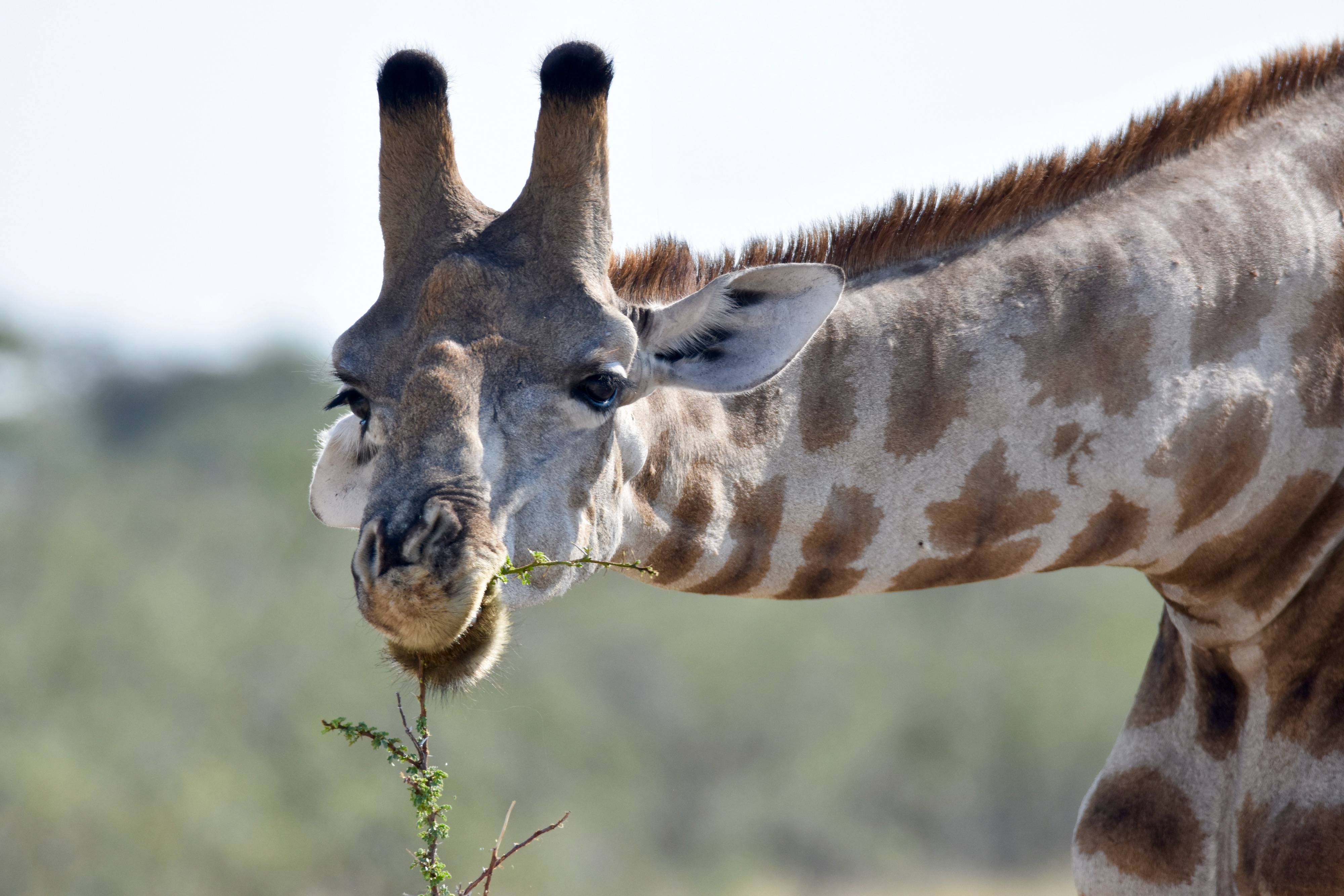
We’re already having a good day and we haven’t even reached the first watering hole. These are two Burchell’s zebras which is the most common type in Africa and well adapted to life in Etosha.
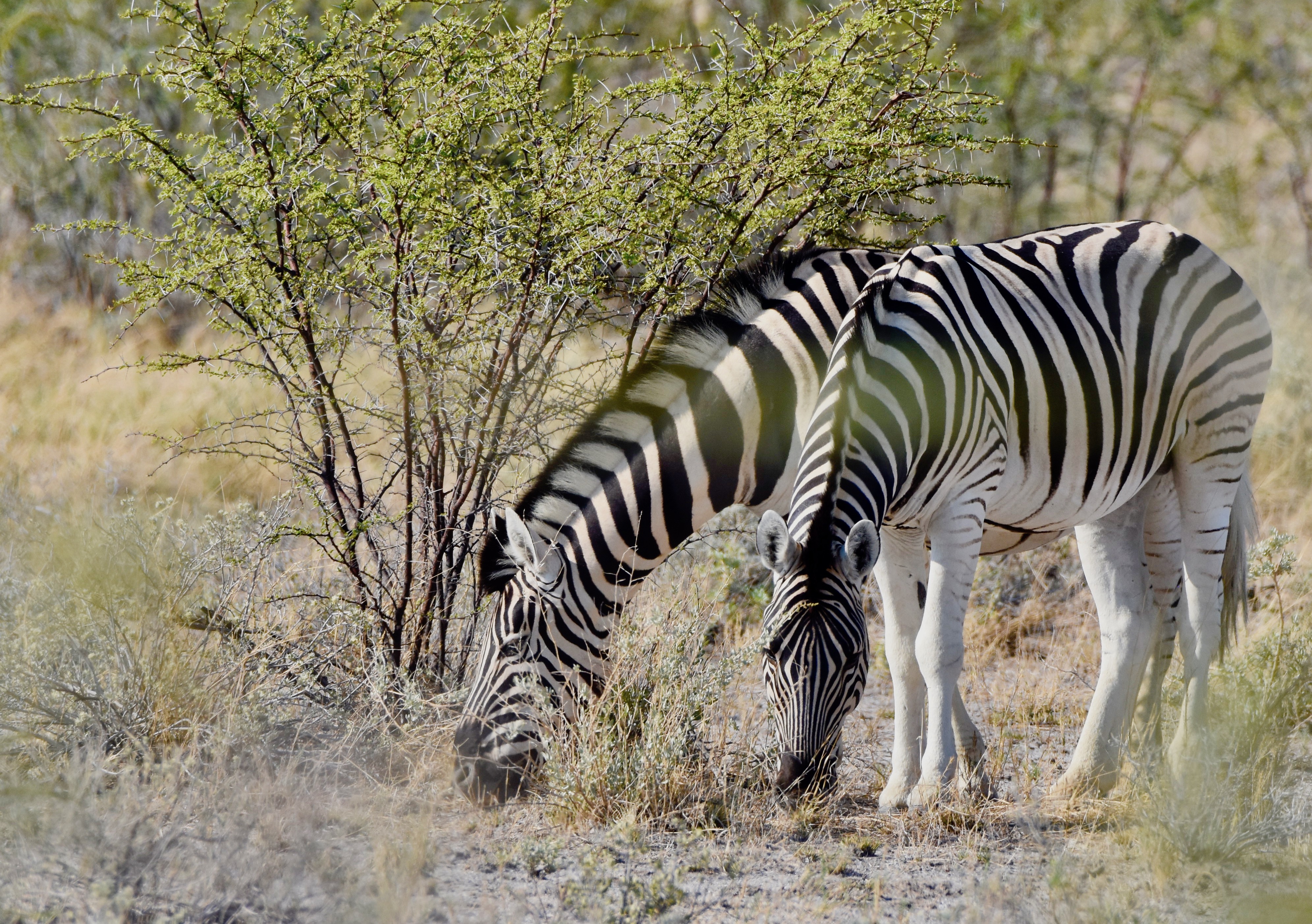
Arriving at the first water hole we find a herd of springboks having a drink.

And ostriches who come to join the springboks. With their long necks and excellent eyesight they are welcome sentinels at every water hole where predators come to ambush unsuspecting prey.
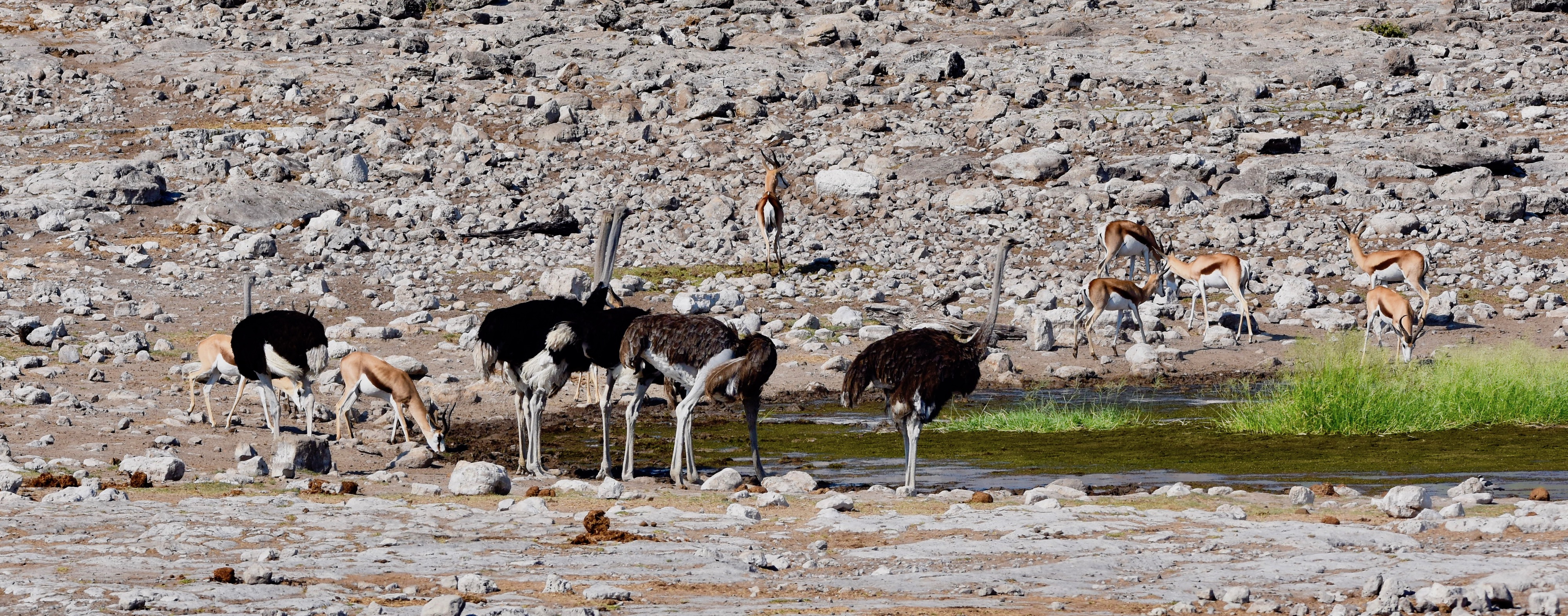
Heading to a second water hole our guides spot a large dark carcass which they identify as a black rhino, one of the rarest animals on earth. These jackals are having a feast. My first thought is, “Those God damn poachers!”

But, it isn’t poachers who killed this juvenile rhino. These are the perpetrators.
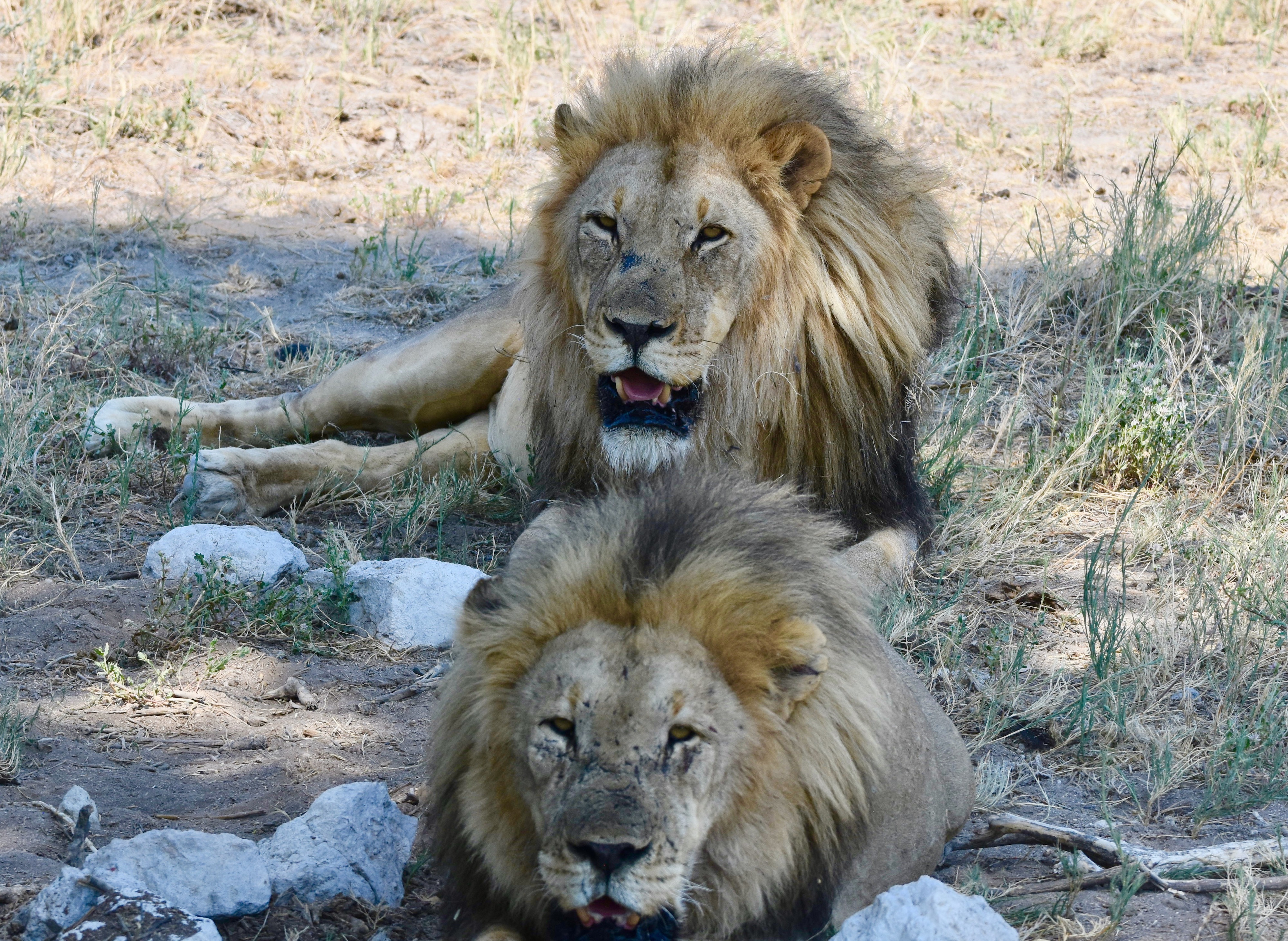
Our guide Perez confirms through CB talks with other guides that indeed these two brothers and their female accomplices killed the rhino a day before. Etosha is home to one third of all the black rhinos on earth, but that number is only about 1,750. With all the available zebras, kudus, wildebeests why did they have to kill a rhino? The answer is simple – because they were hungry and the opportunity presented itself. Up until today I naively thought that their armour coated skins protected rhinos from being taken as prey and that that their only enemies were humans. Now I know better.
The lion pride was resting beneath an acacia tree atop of which sat this Southern Pale Chanting Goshawk, a possible witness to the mayhem of the day before.
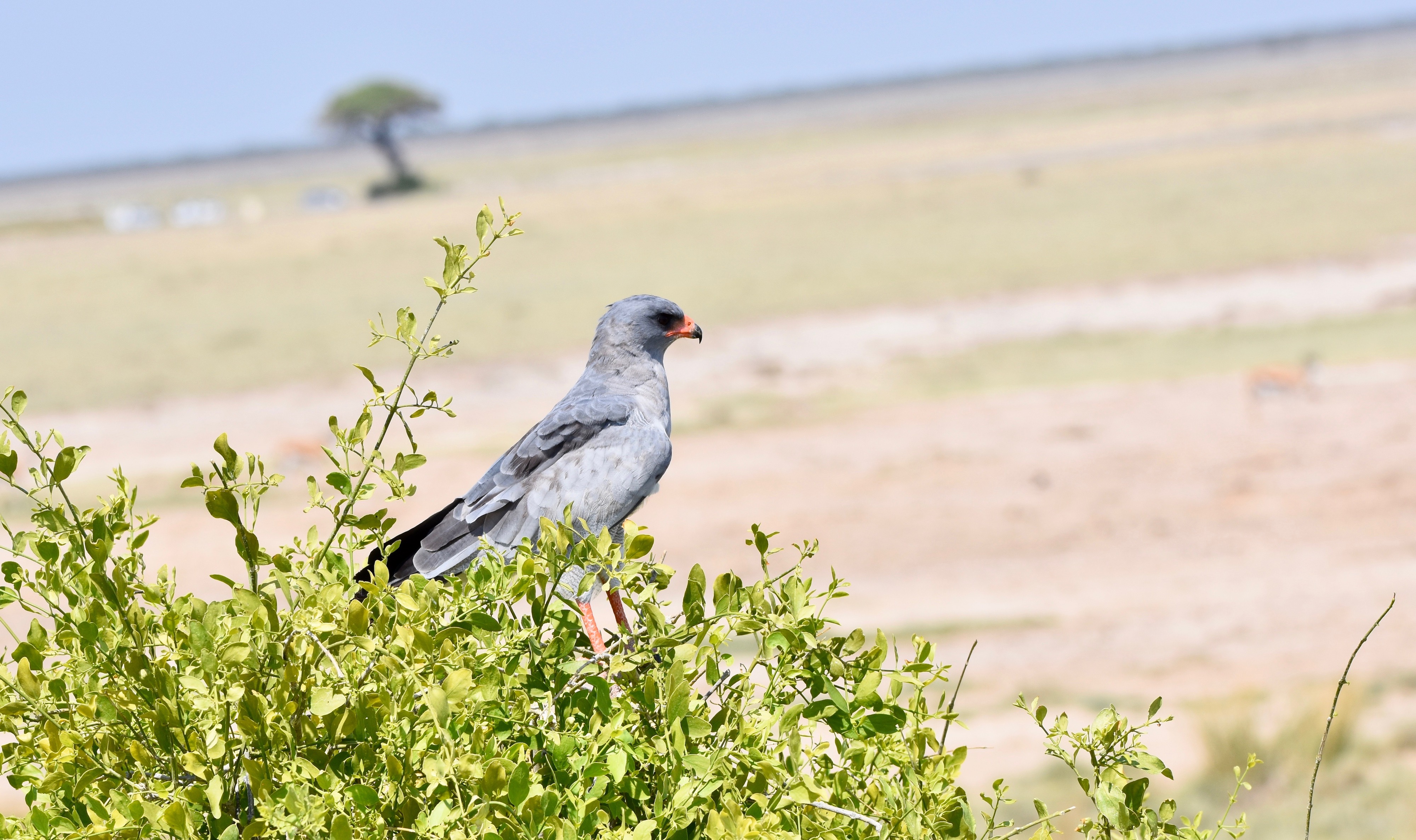
This is a wide angle shot of a typical Etosha Watering Hole.
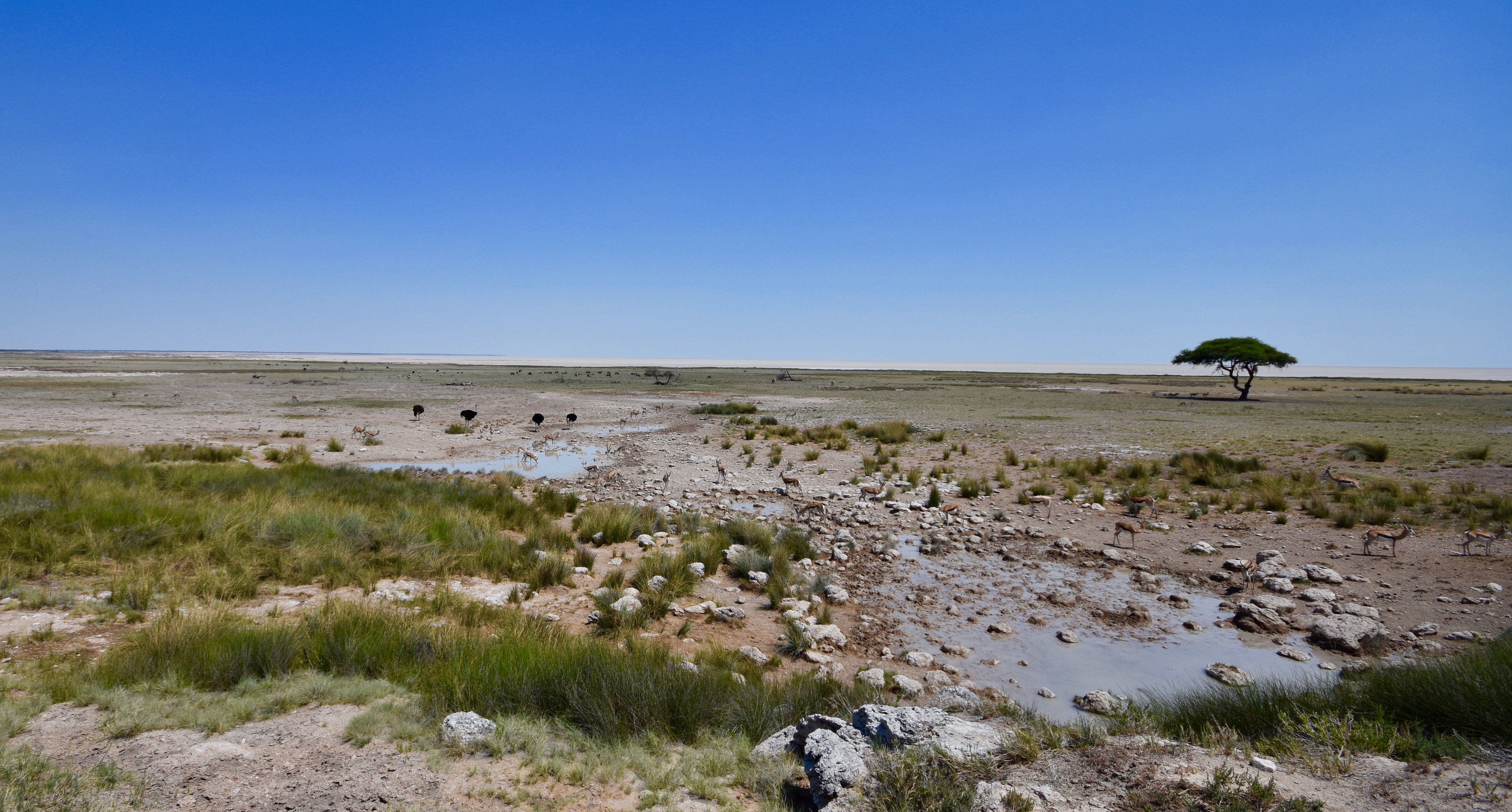
Rhinos were not the only large animals that fell victim to the resident lion pride. Only the hind quarter of this giraffe remains plus a portion of the head. You can see horns.
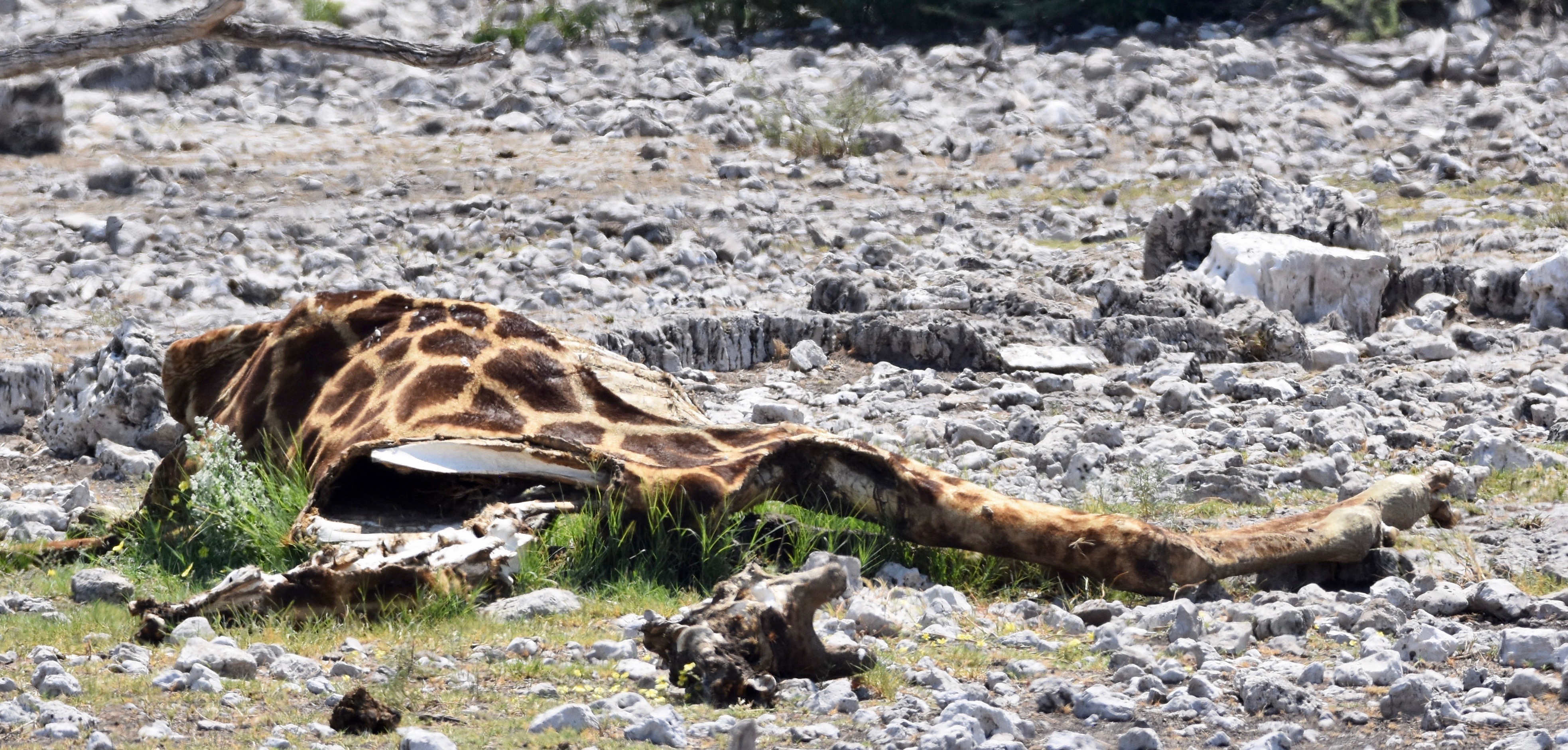
OK, that’s enough of the dark side of Mother Nature, let’s stick to the positive for the remainder of this drive starting with this beautiful tawny eagle, a species found almost all over Africa and India as well. Like the bald eagle of North America they are primarily scavengers, something that almost seems below their dignified appearance.
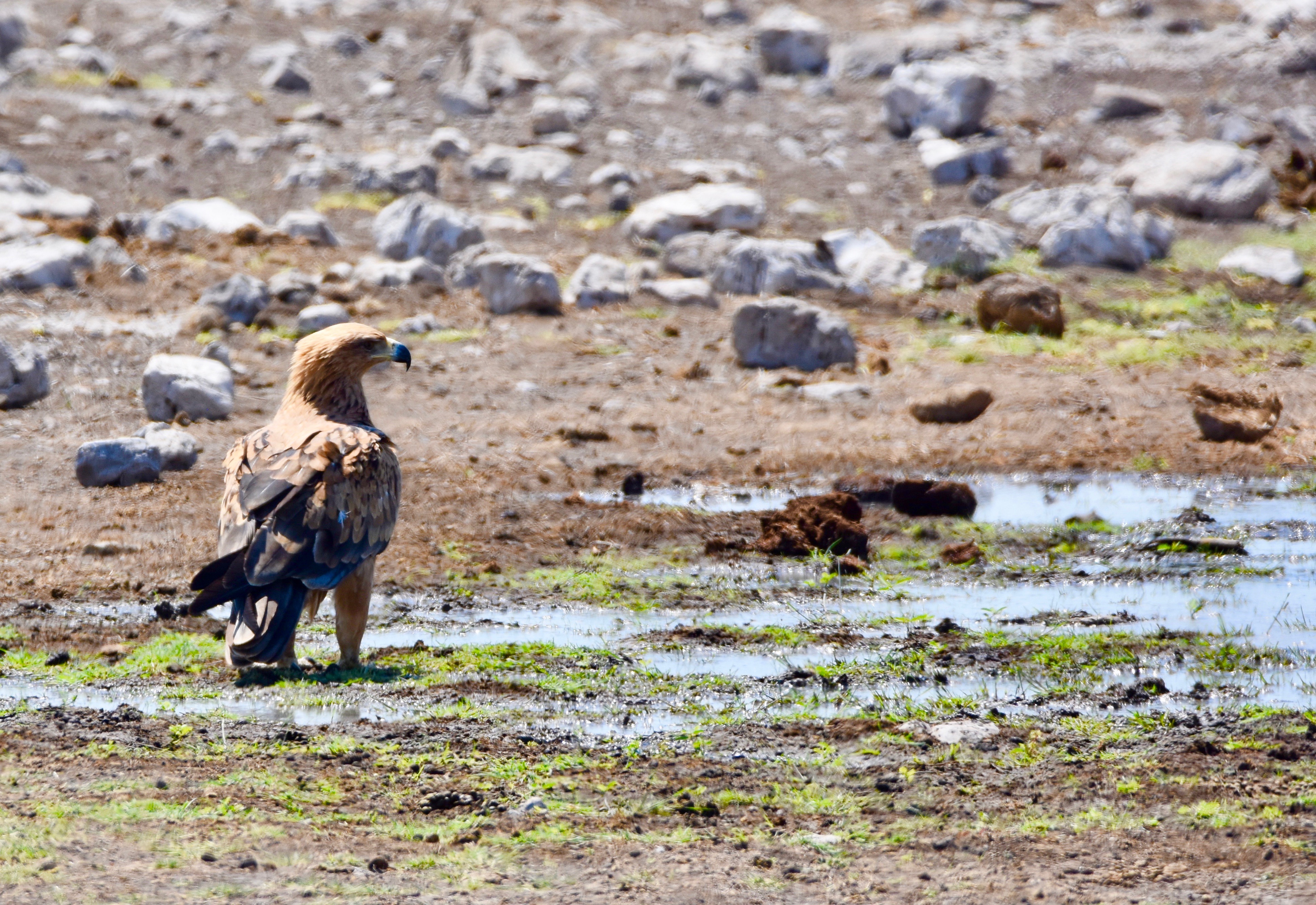
This is a curious male greater kudu, the second largest antelope in Africa after the eland. For thousands of years their horns have been made into shofars, a traditional instrument blown at certain Jewish ceremonial events.
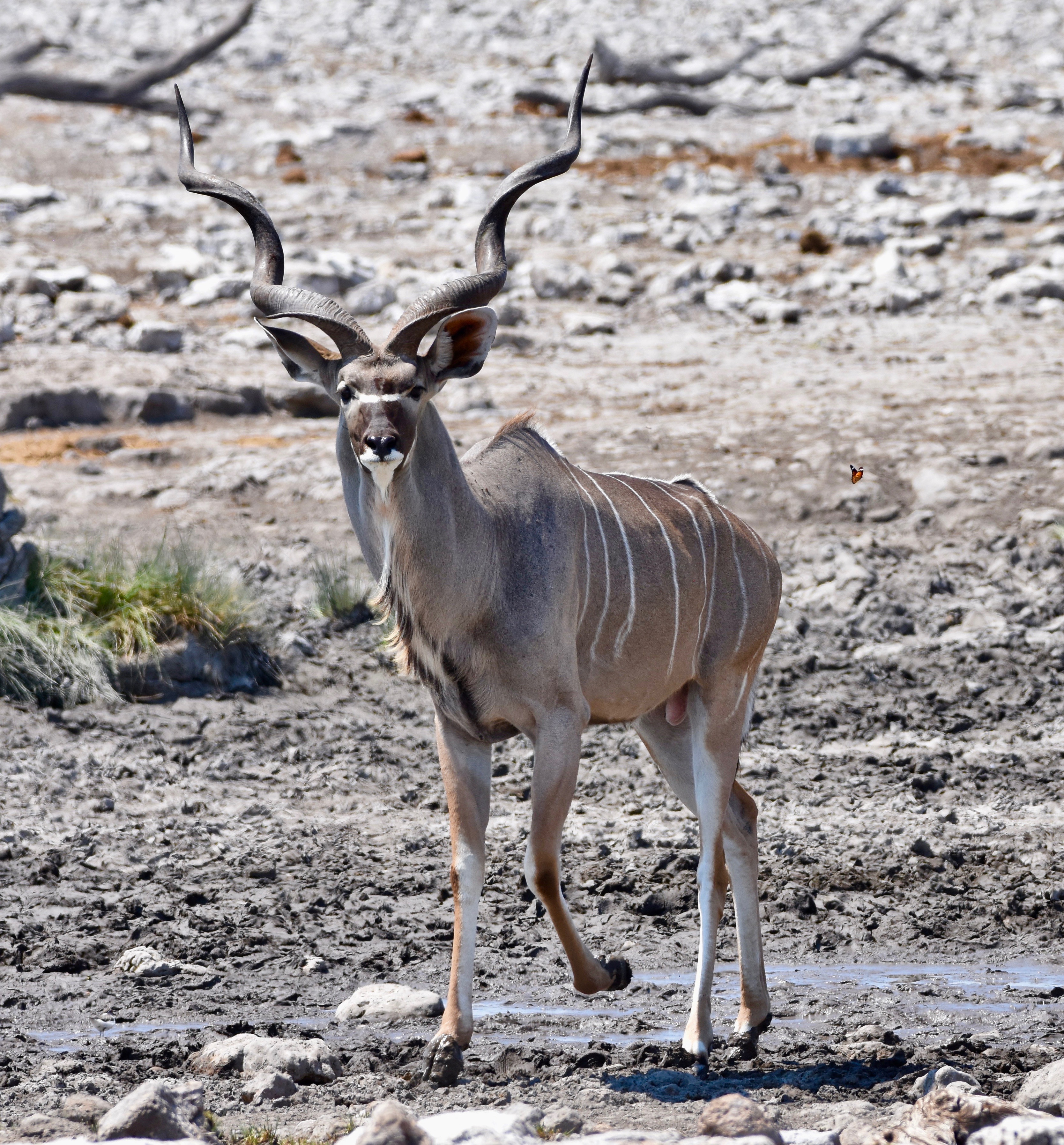
This is a typical scene at many Etosha watering holes with a number of species banding together, in this case springboks, a wildebeest and a kudu.
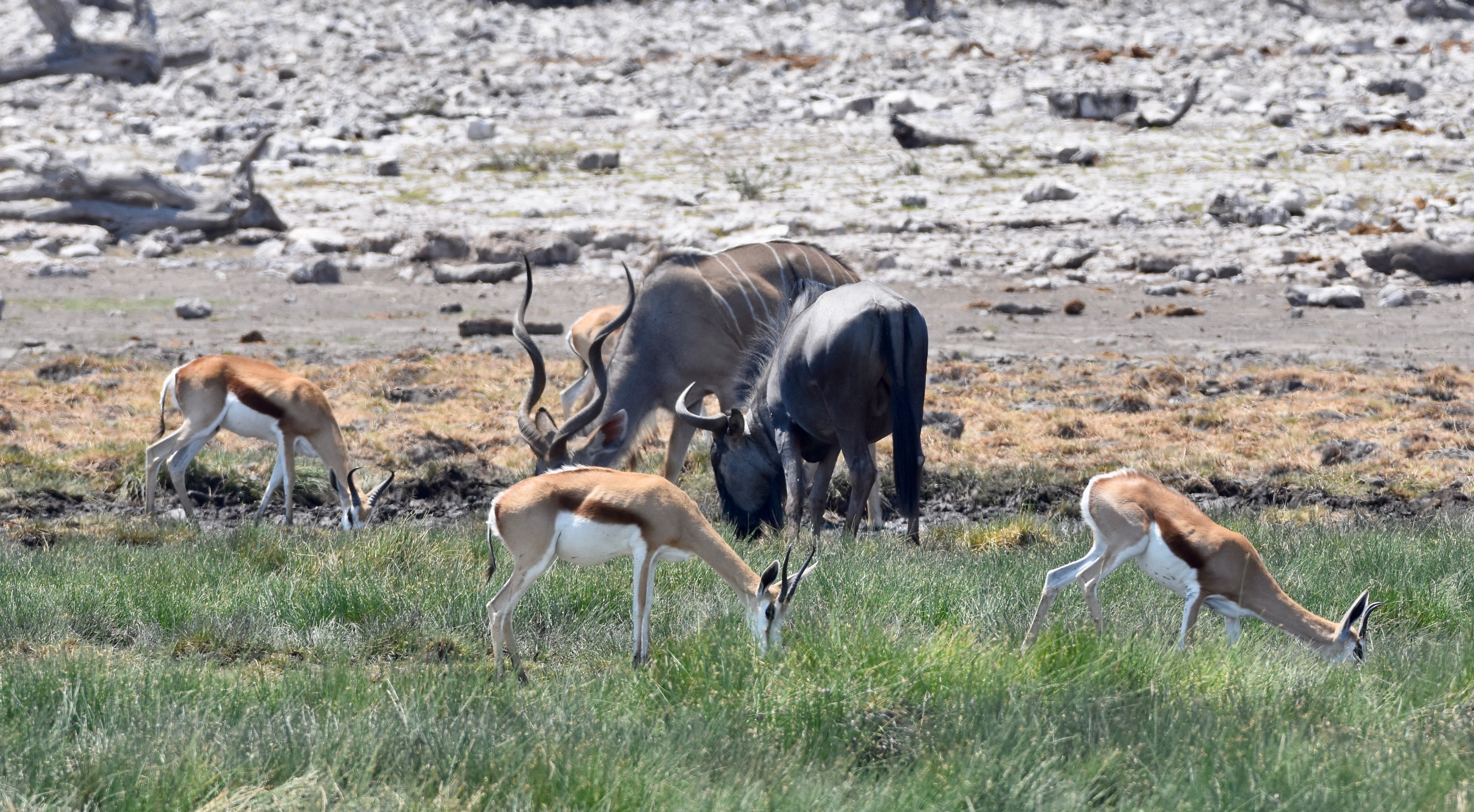
This odd looking fellow is a red hartebeest which is a distinct species from those found in East Africa. The only previous one we came across was the desiccated corpse on our desert elephant safari in Damaraland.
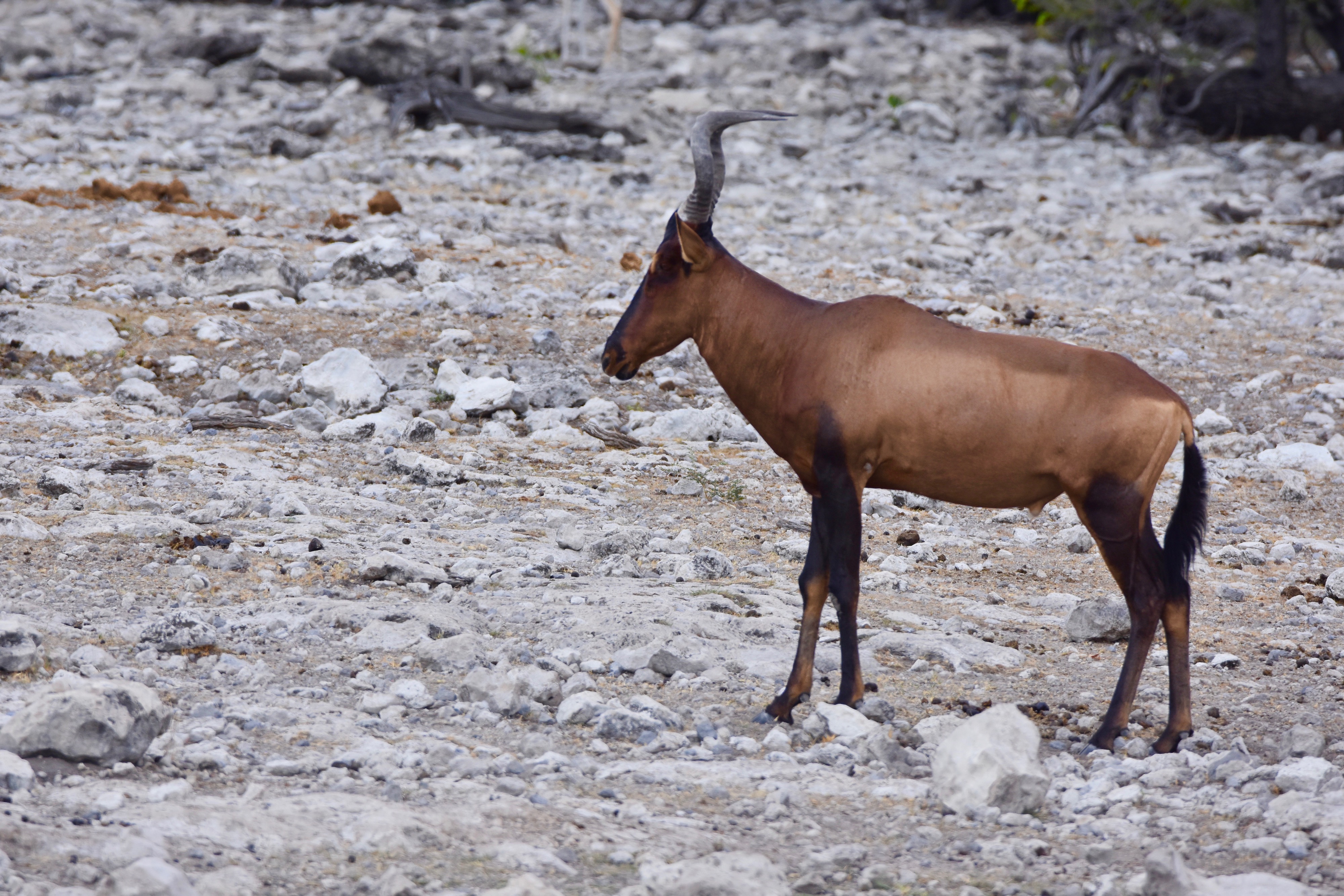
Most of the waterholes are surrounded by wide open rocky ground that does not leave many places for predators to lurk in hiding. This lioness was coming for a drink with no chance to catch an unwary antelope or zebra.
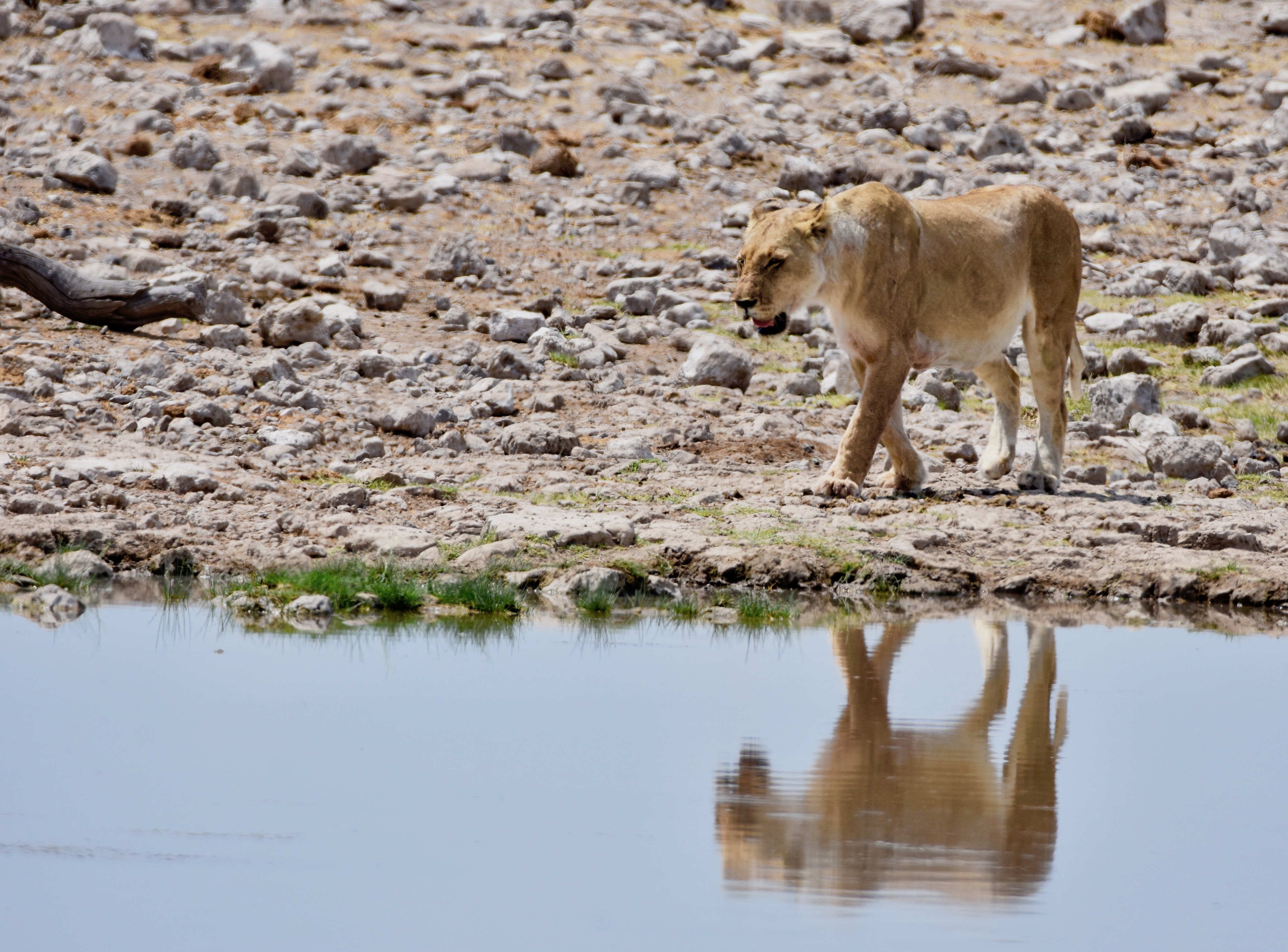
There’s something about zebras that makes them a treat to photograph.
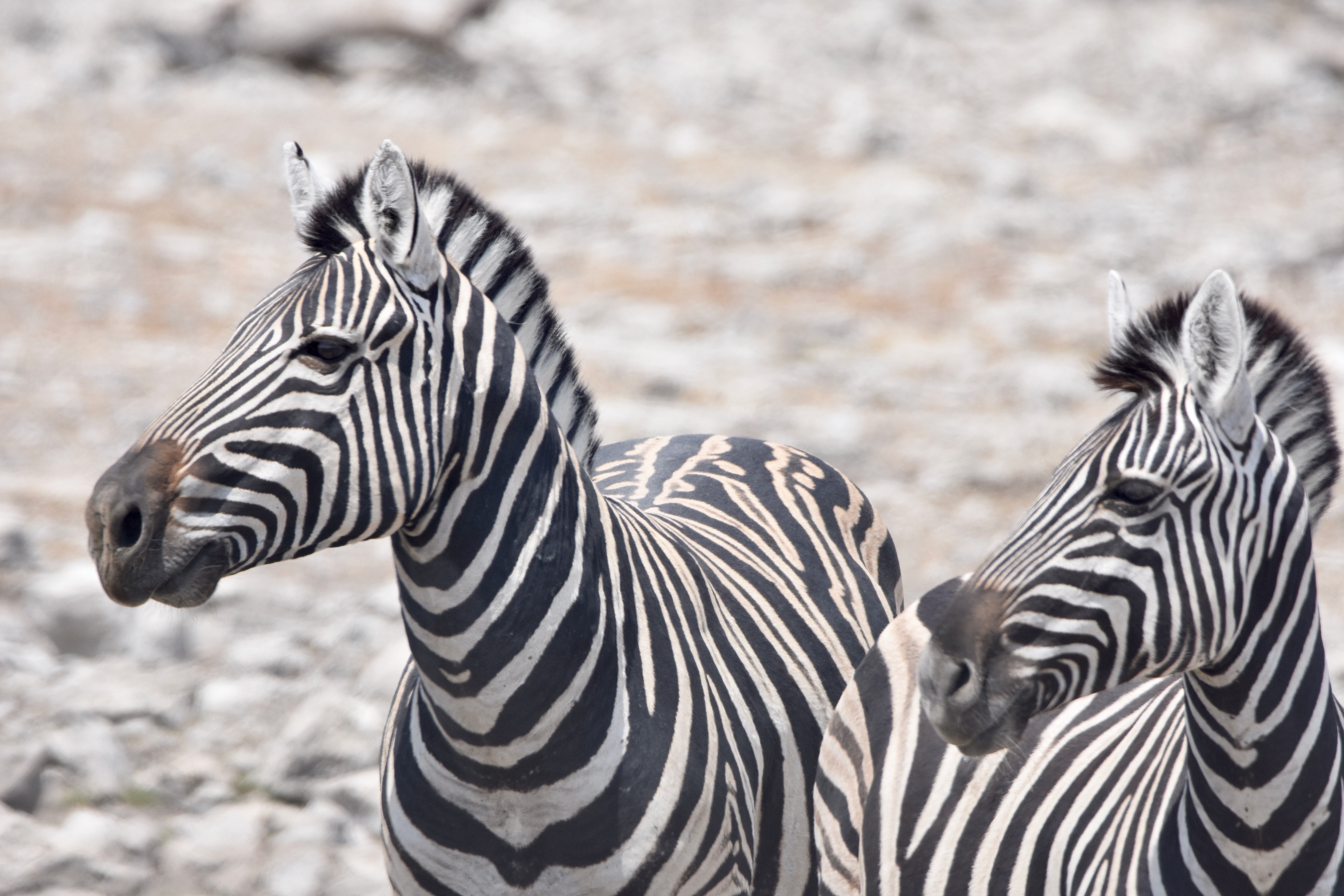
This newborn was not more than a few days old and seemed quite unstable on his feet, but when he had to run he could move very fast.
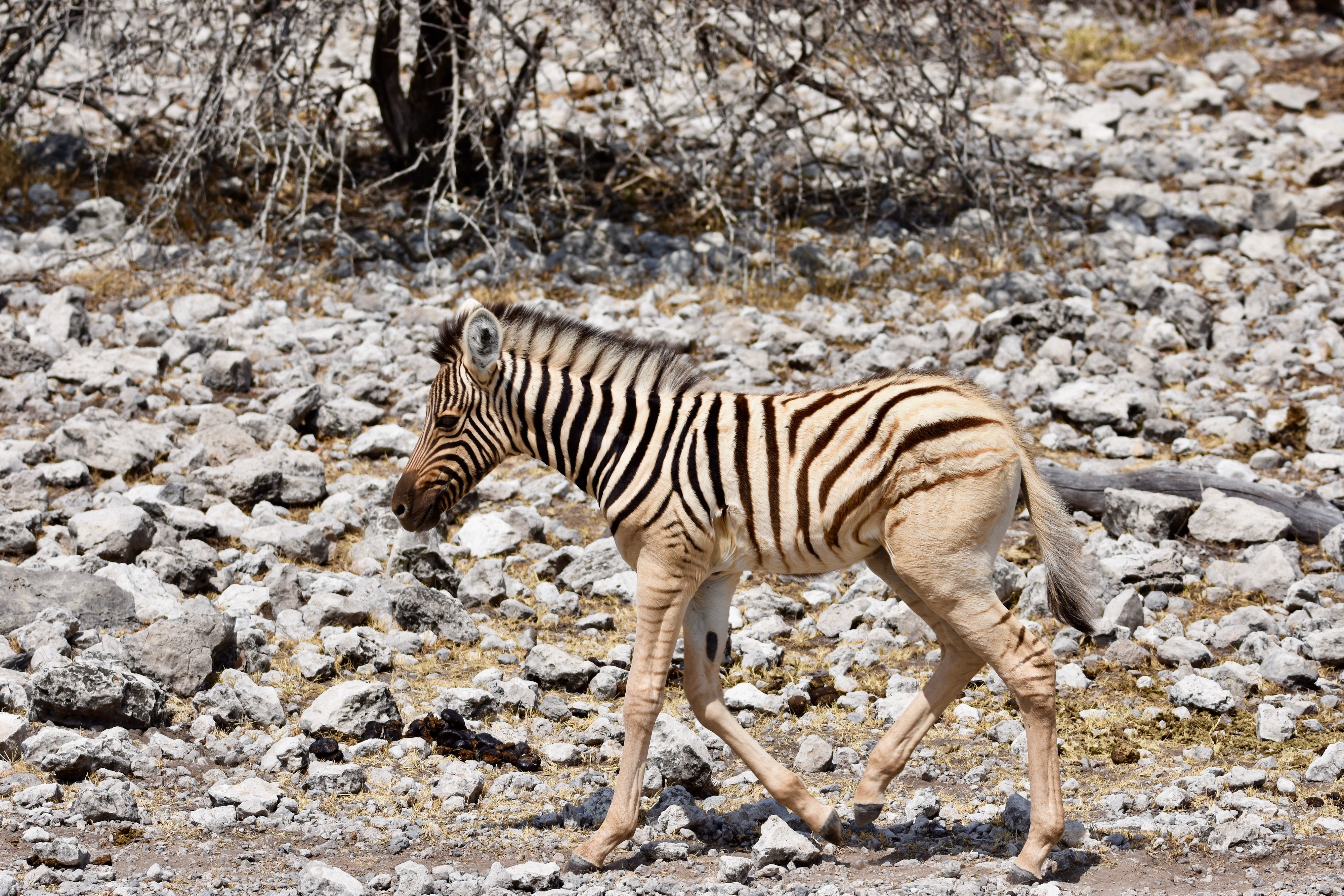
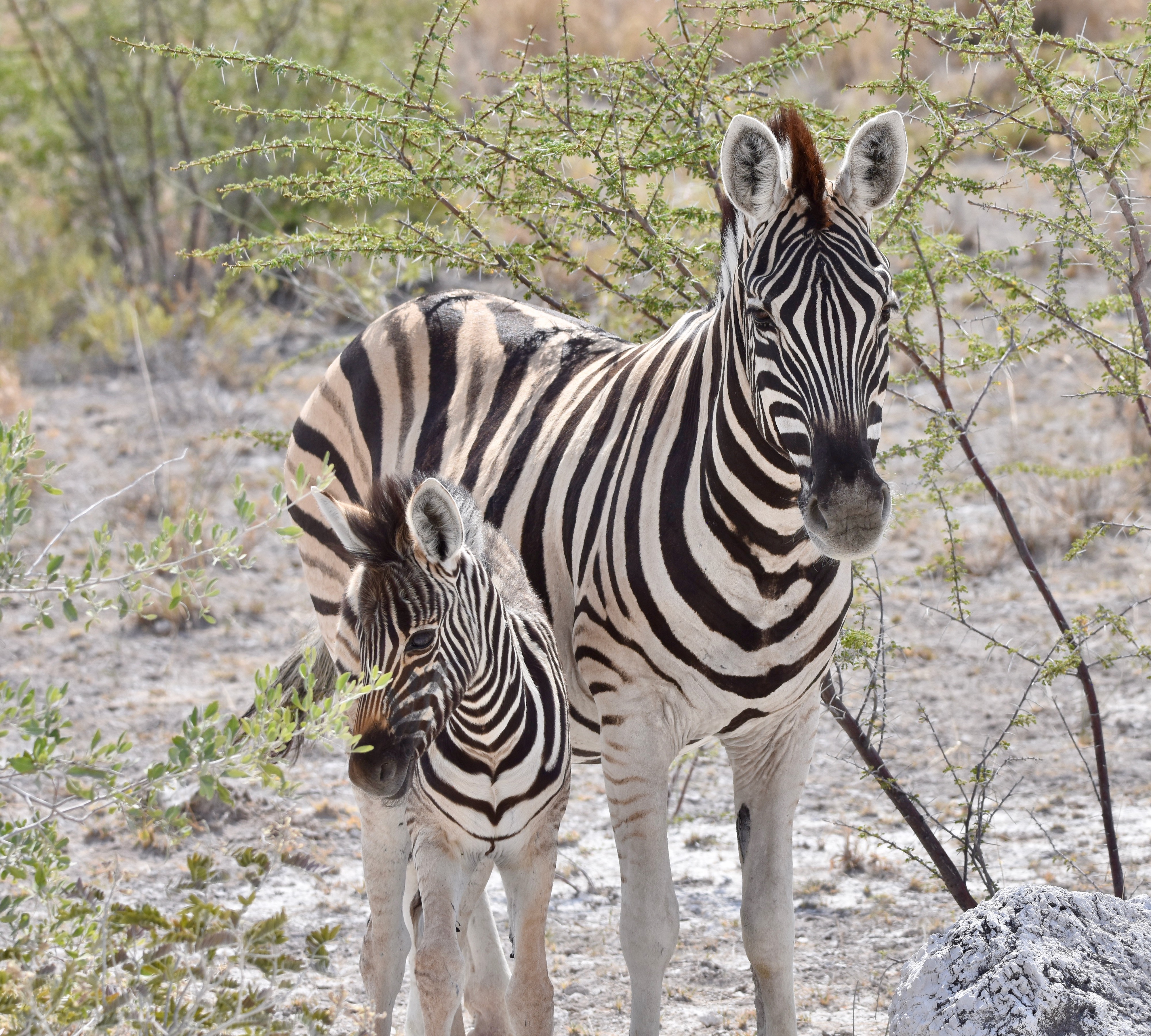
The martial eagle is completely different from the tawny eagle. This guy is no scavenger, but rather a powerful hunter nicknamed ‘the leopard of the sky’. They have been known to take down full grown jackals, many species of monkey and baboon and other very large prey. This has made them the enemy of African farmers who have persecuted them to the point of near extinction. Now protected in places like Etosha, it is hoped they will make a gradual recovery.
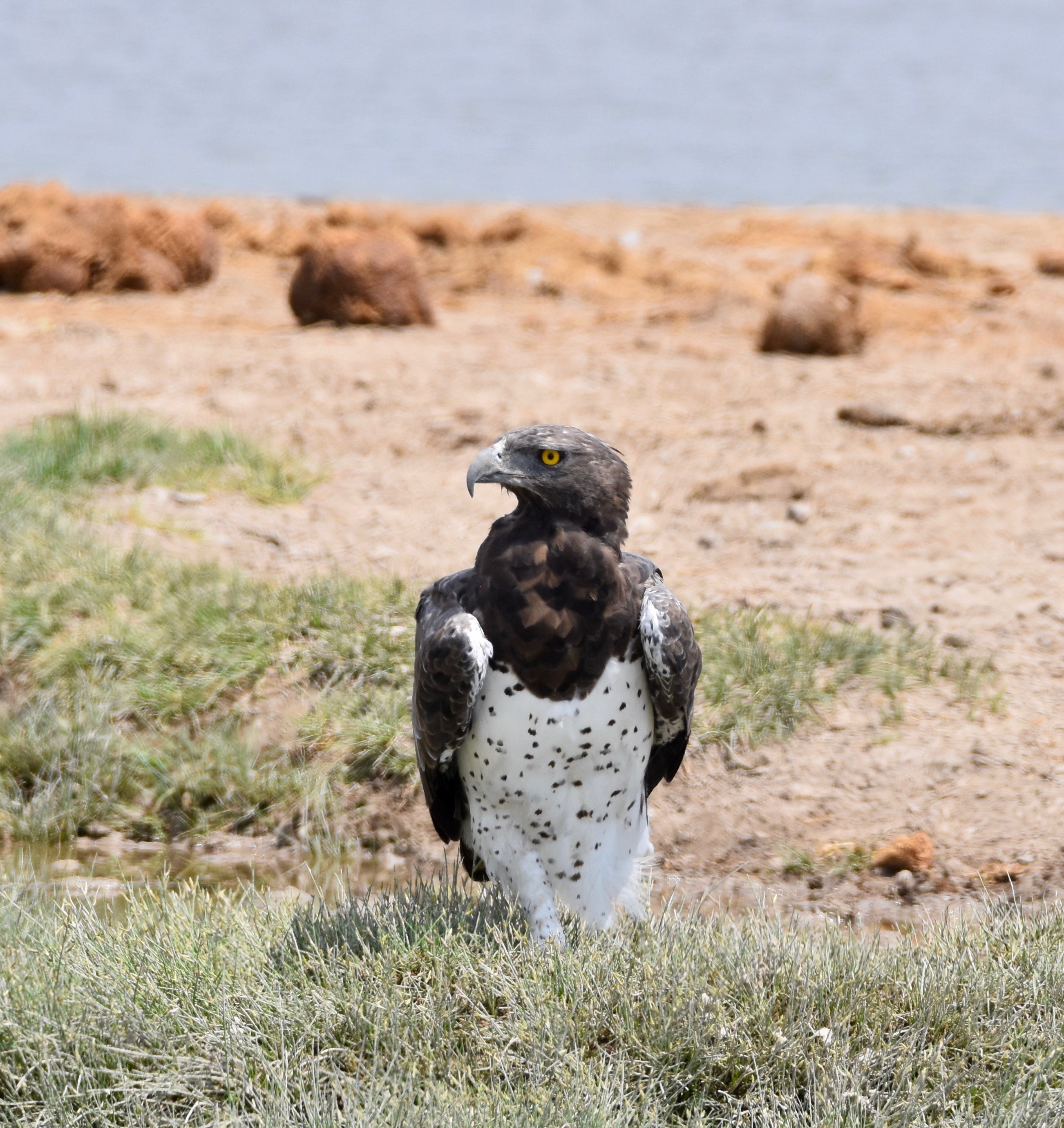
These four giraffes were seemingly looking in all directions for signs of trouble before very cautiously approaching the watering hole.
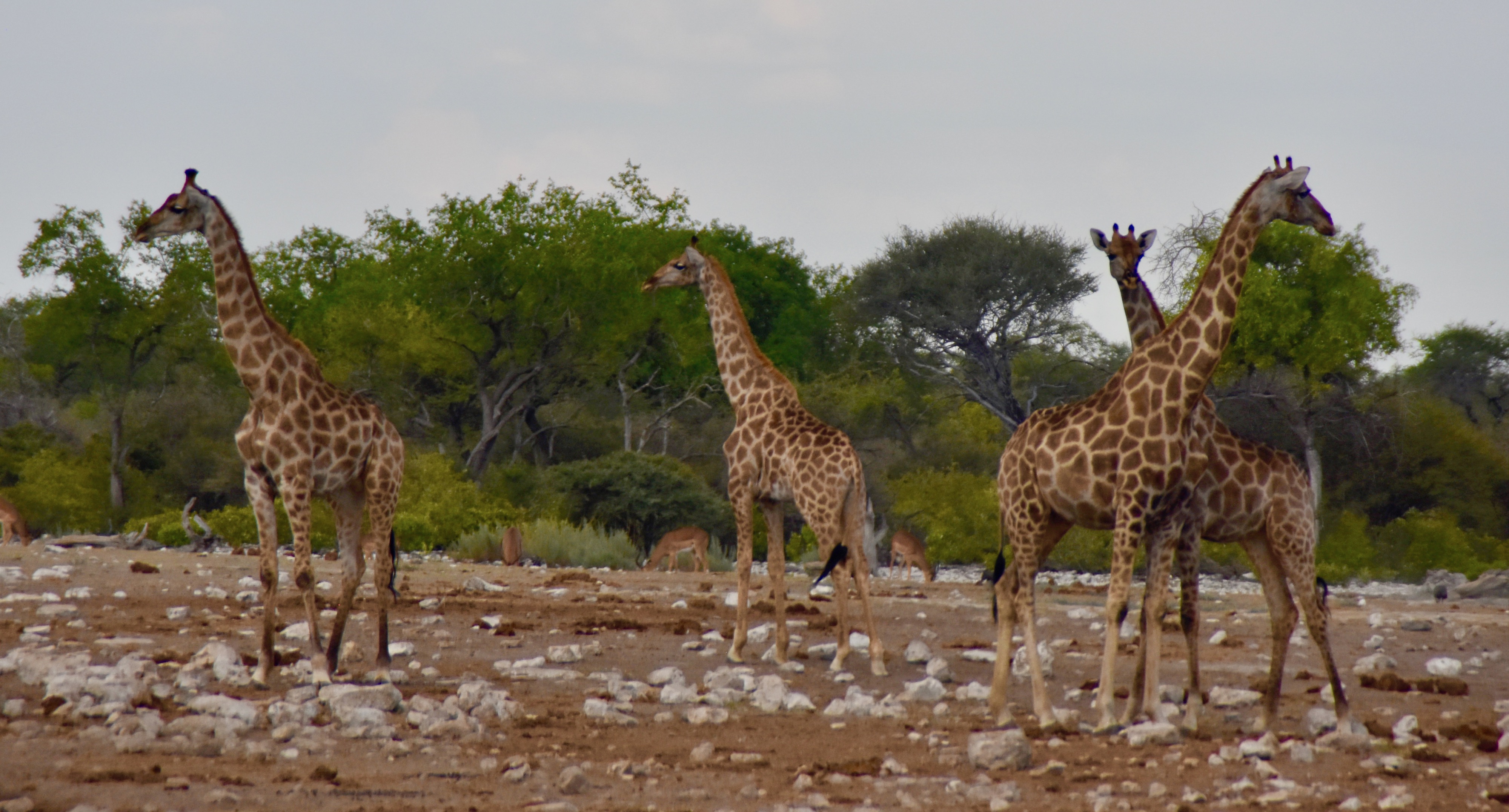
One of the most inelegant drinking postures in nature is surely that of the giraffe. They need to splay their legs in such a manner that it looks like they’ll topple over at any second, but they don’t. It’s actually a very dangerous position for a giraffe to be in and no doubt the warthog would spot danger first and give warning to be wary.
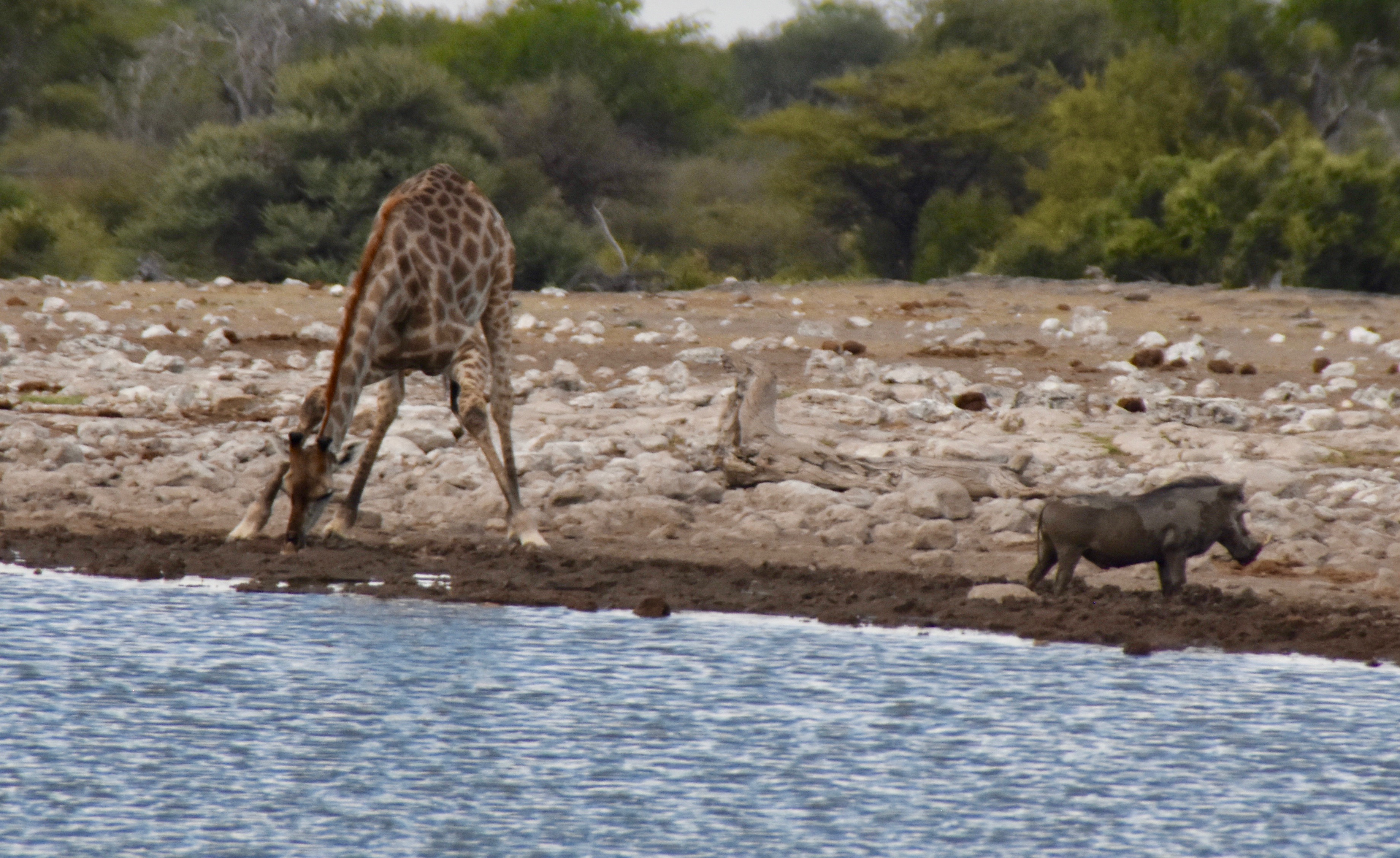
Thus ended our second game drive in Etosha. I will take up the next two in my final post from Namibia. Hope you’ll join me.

